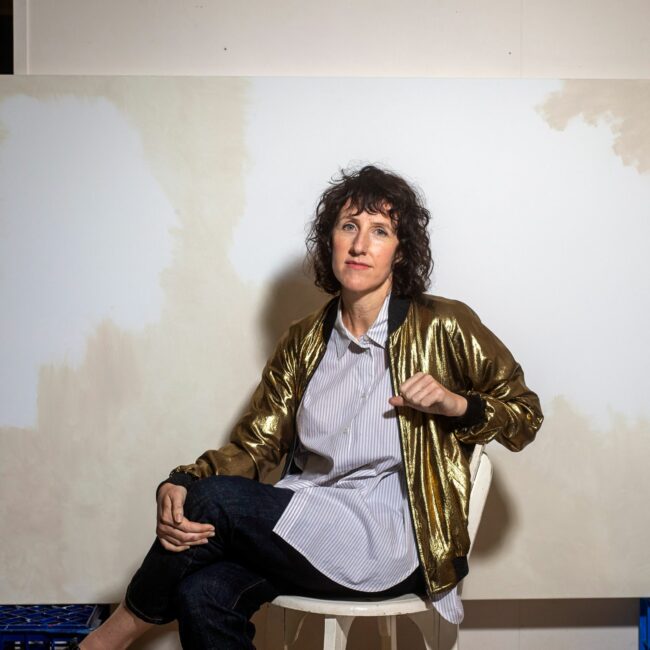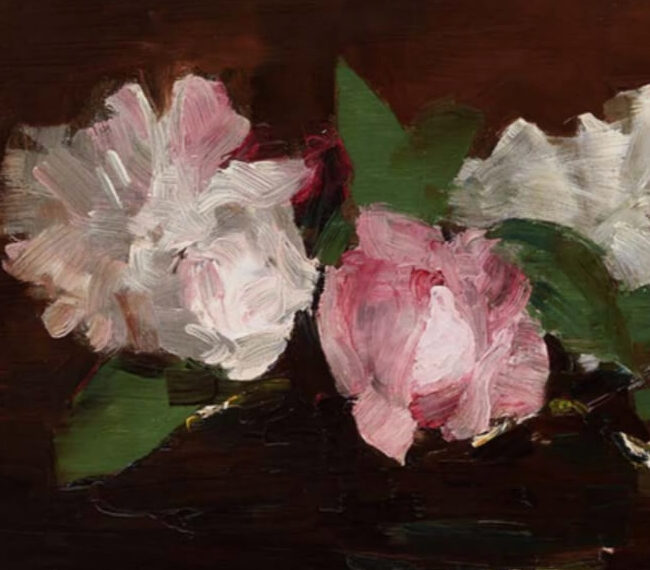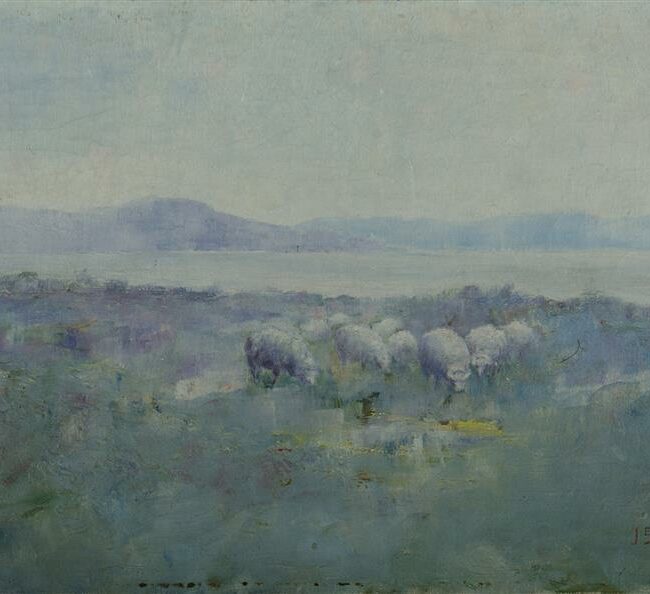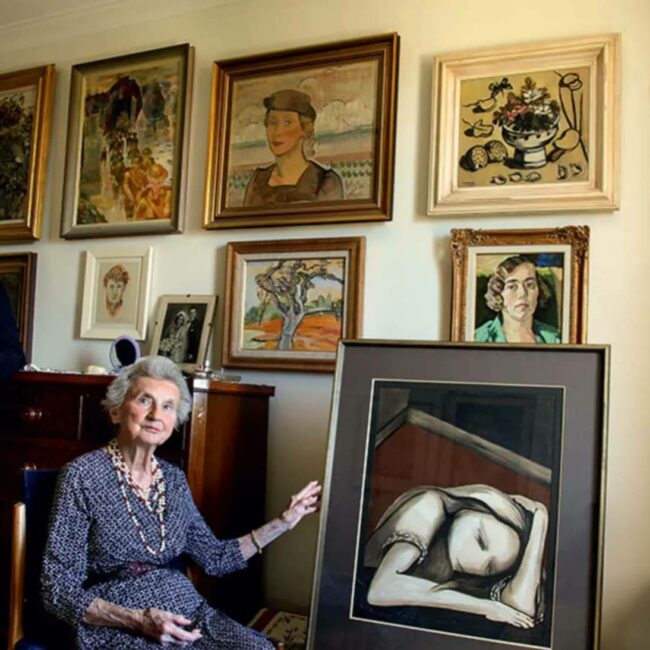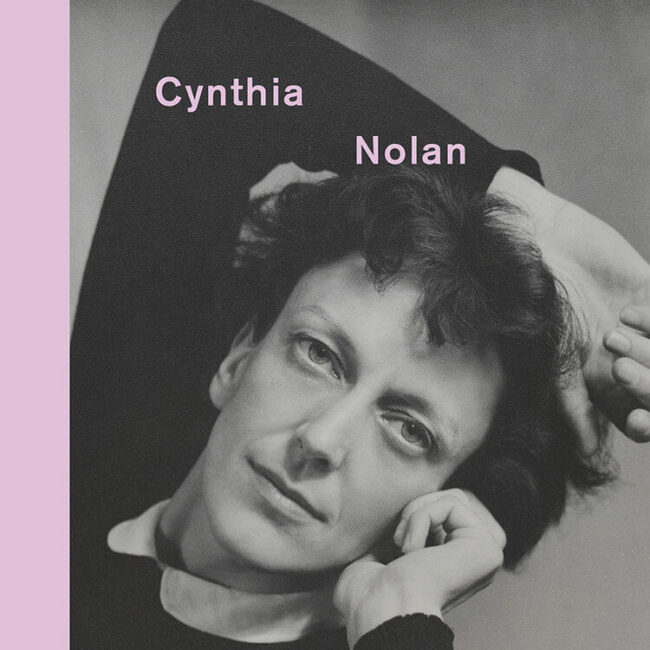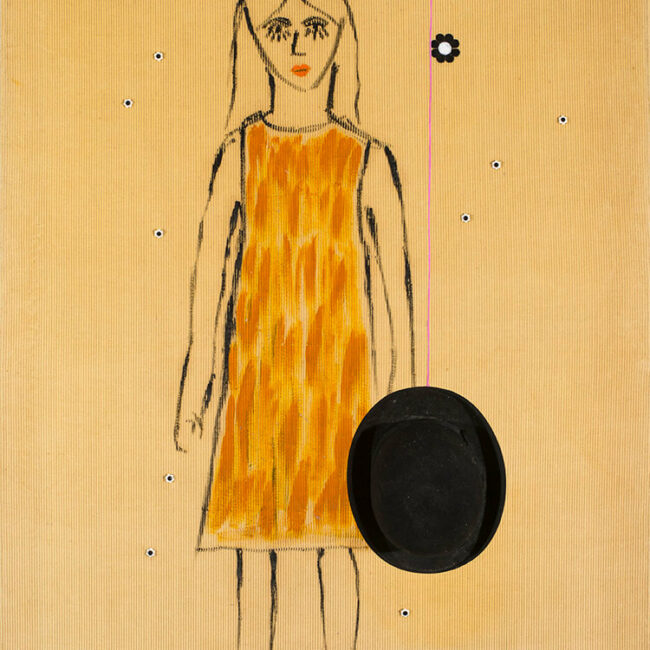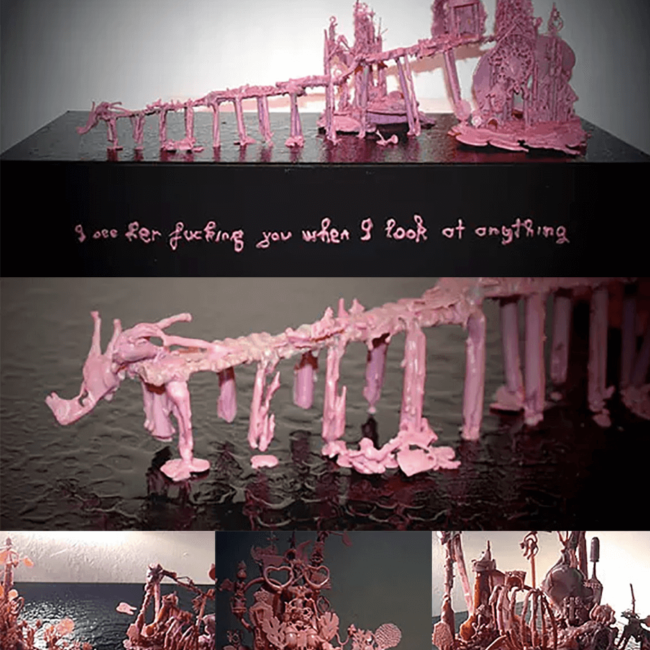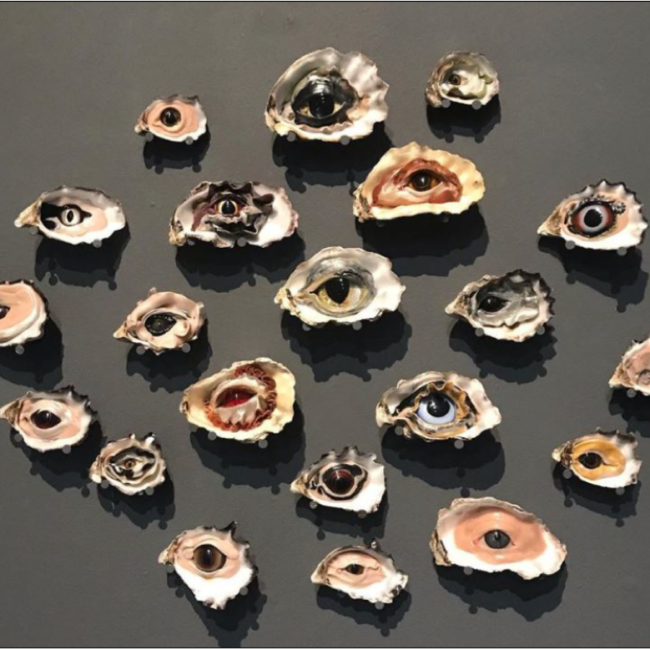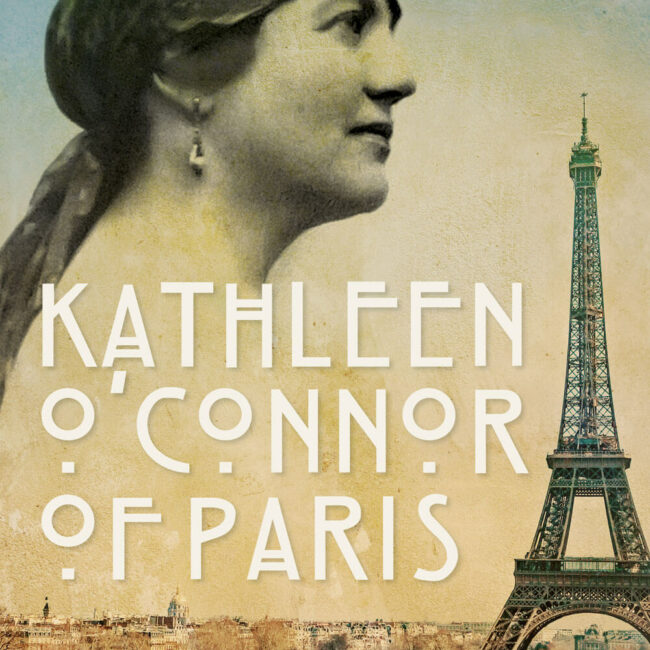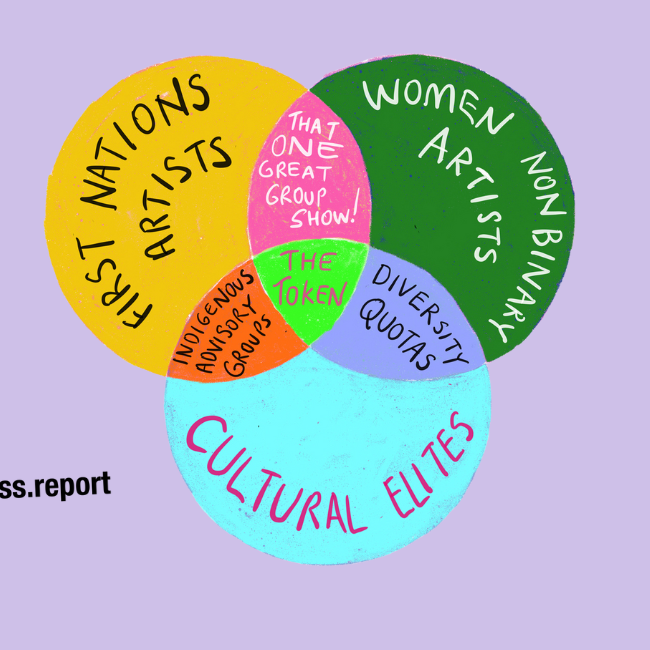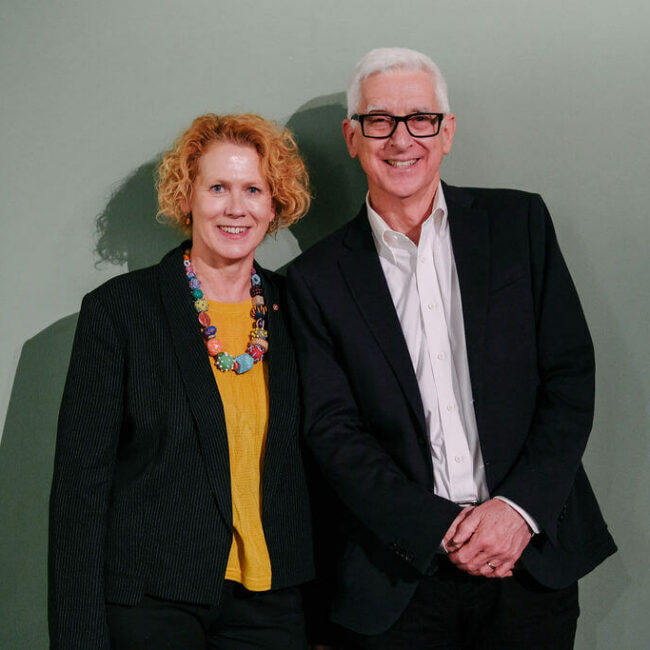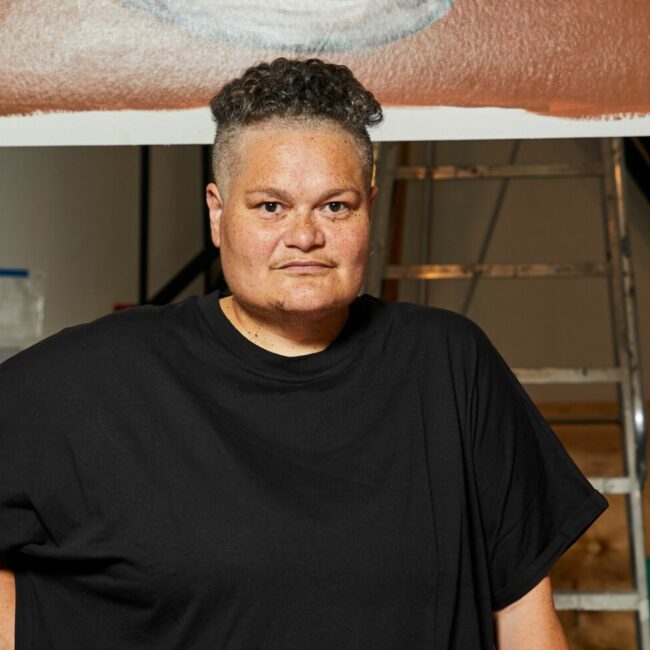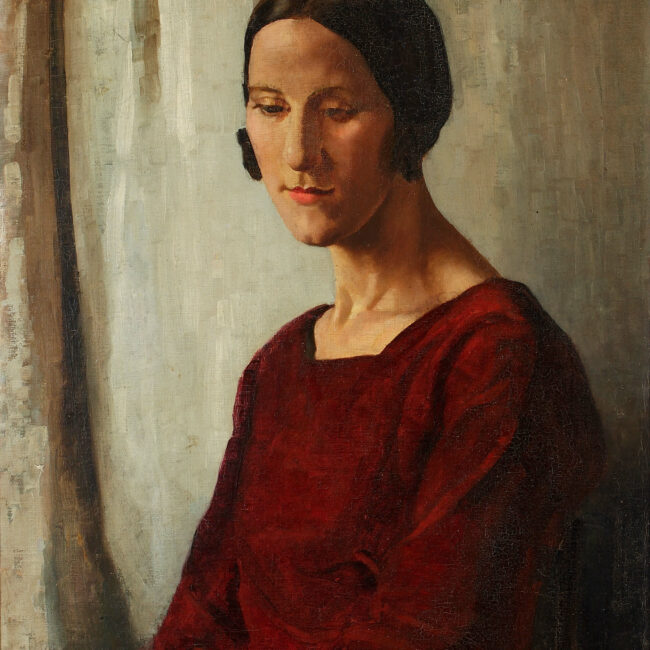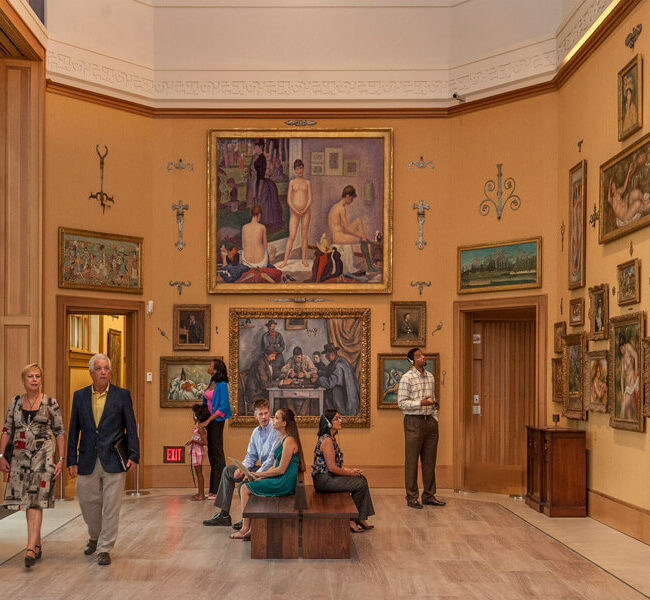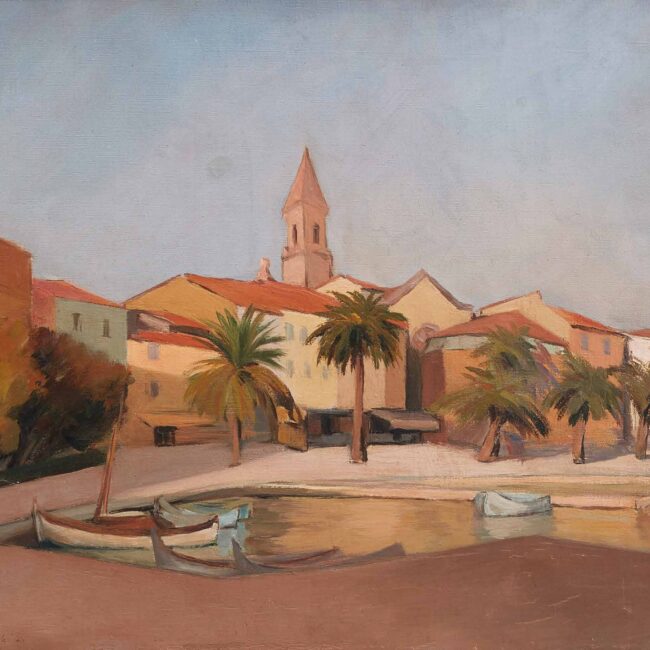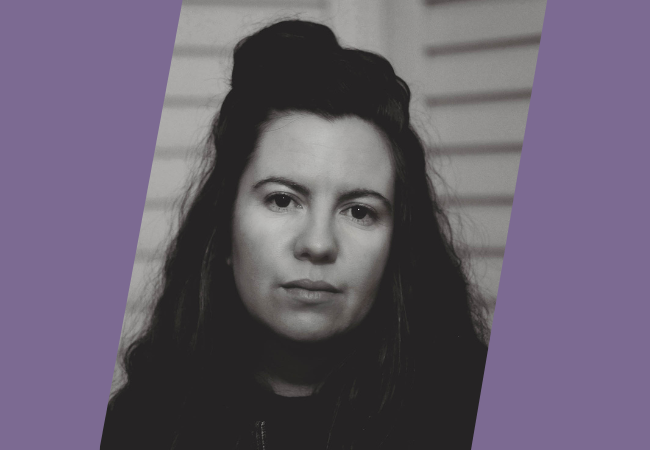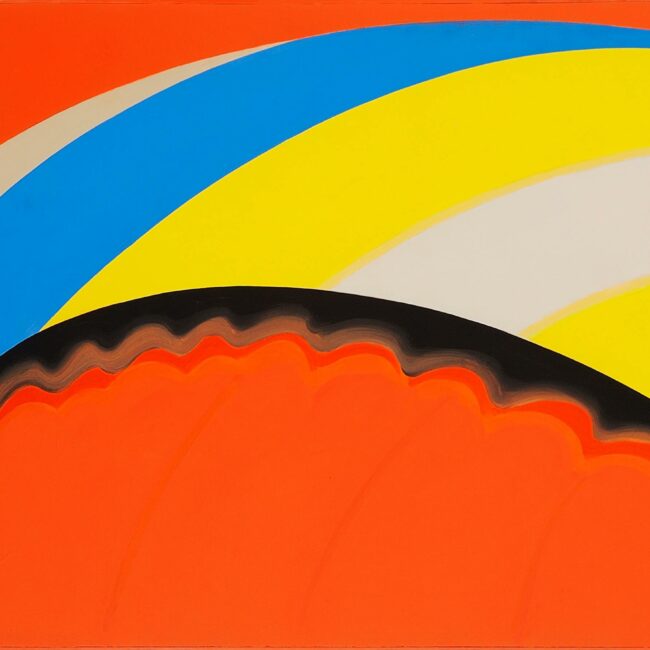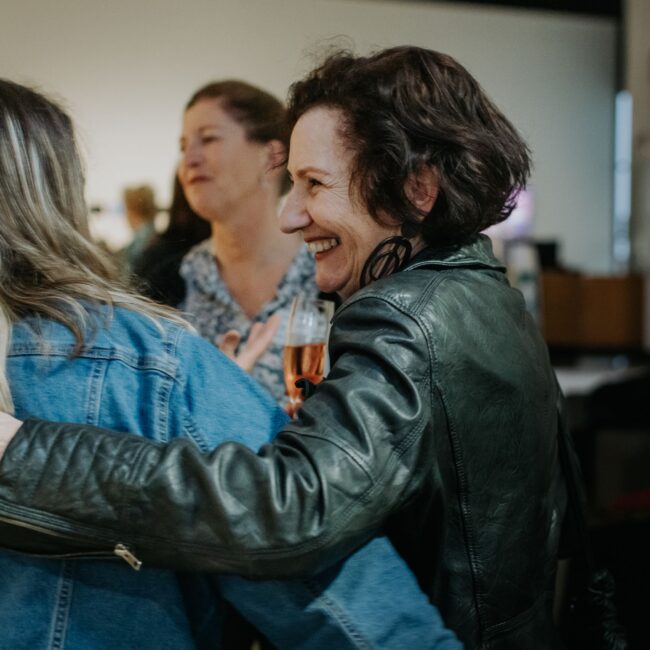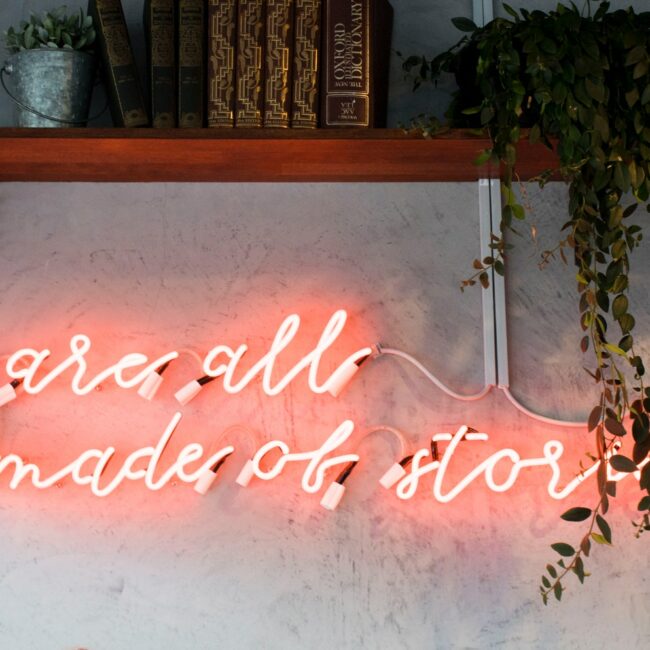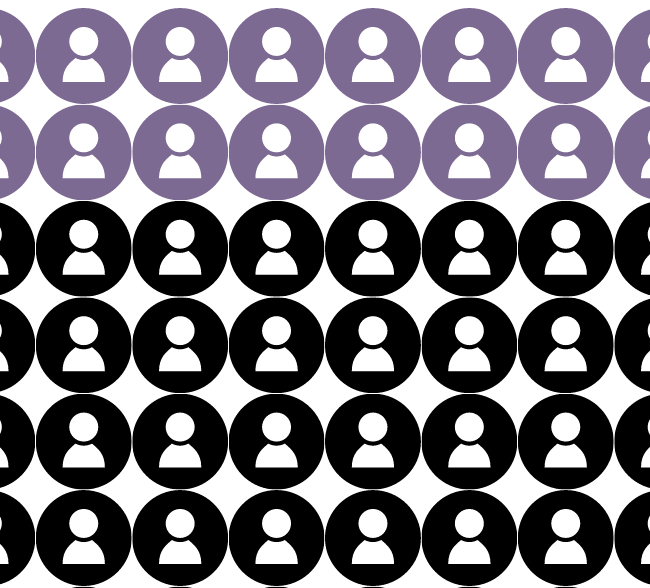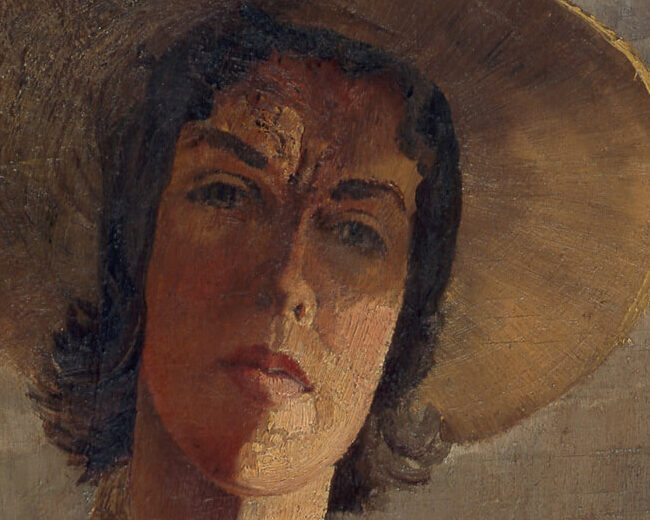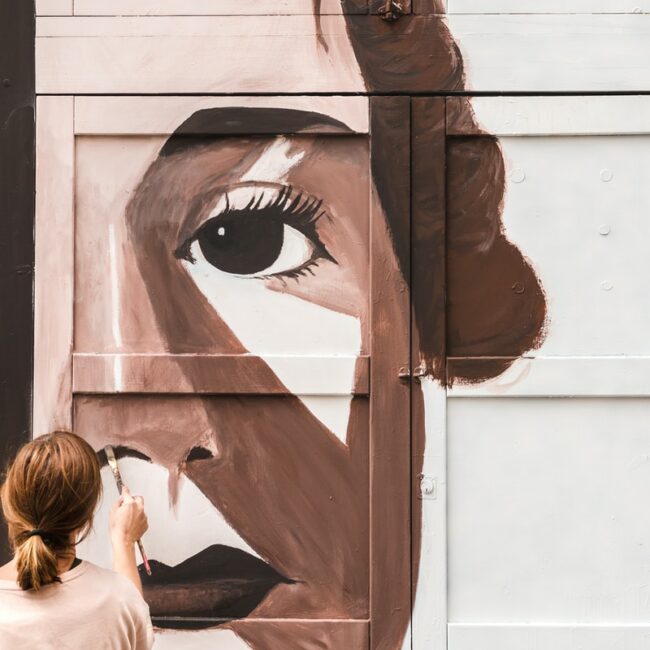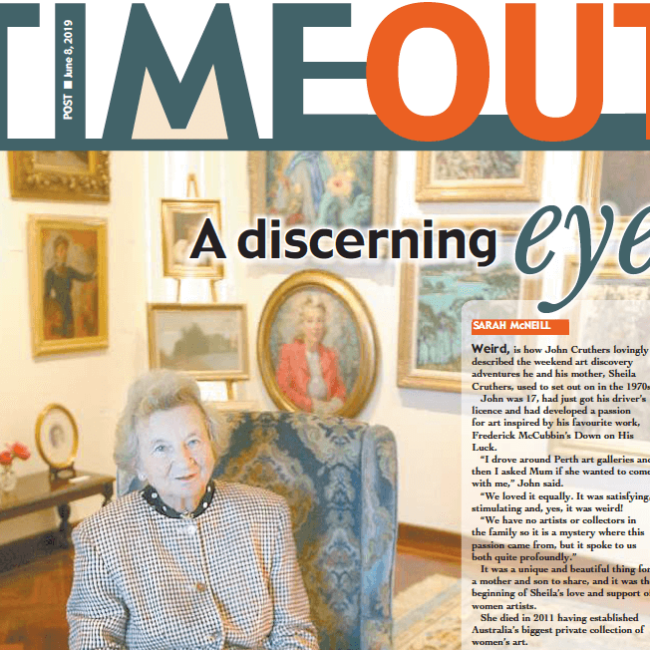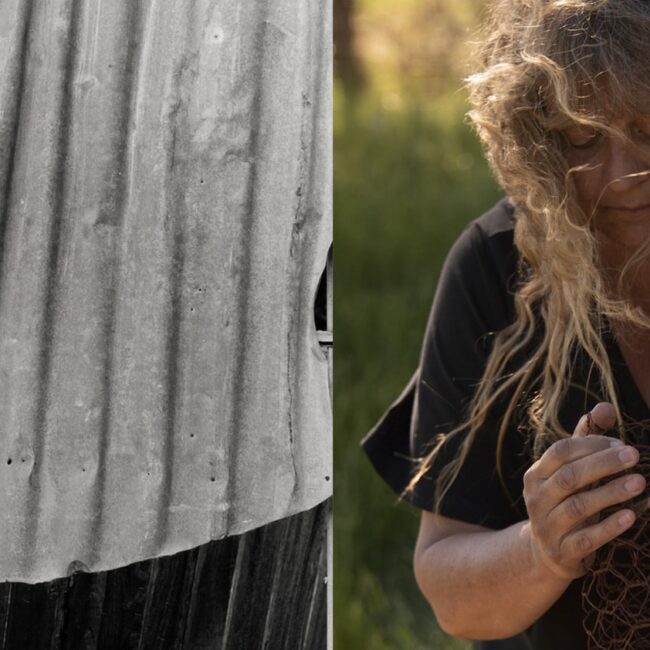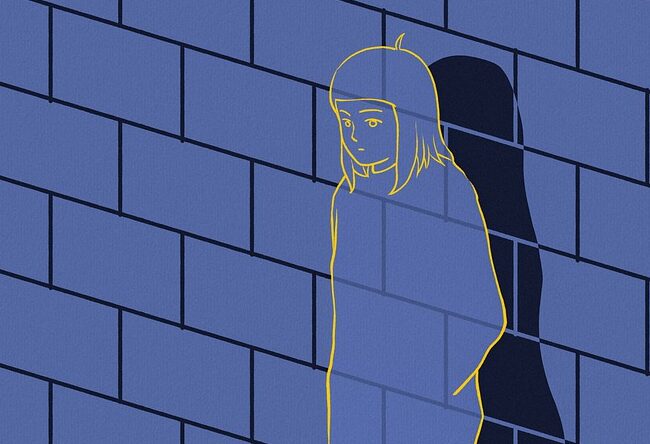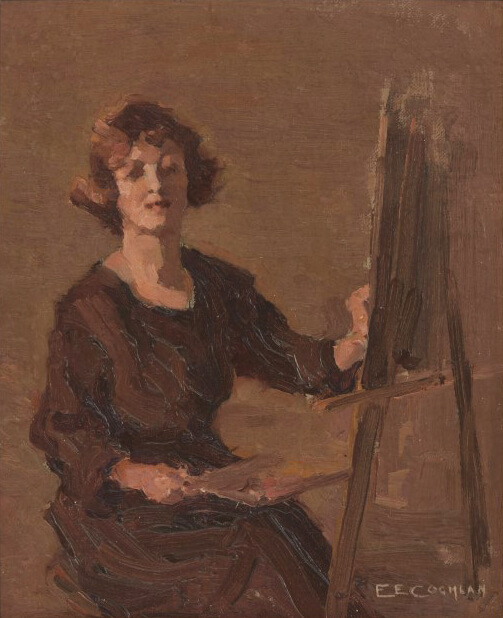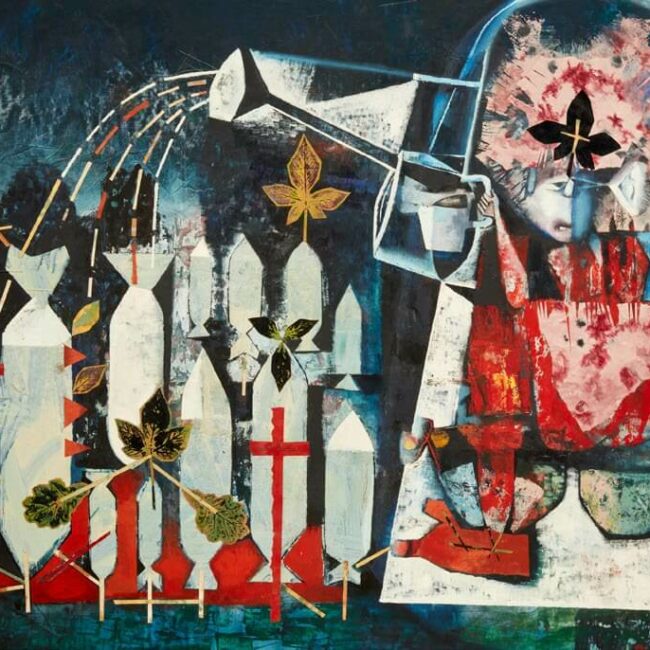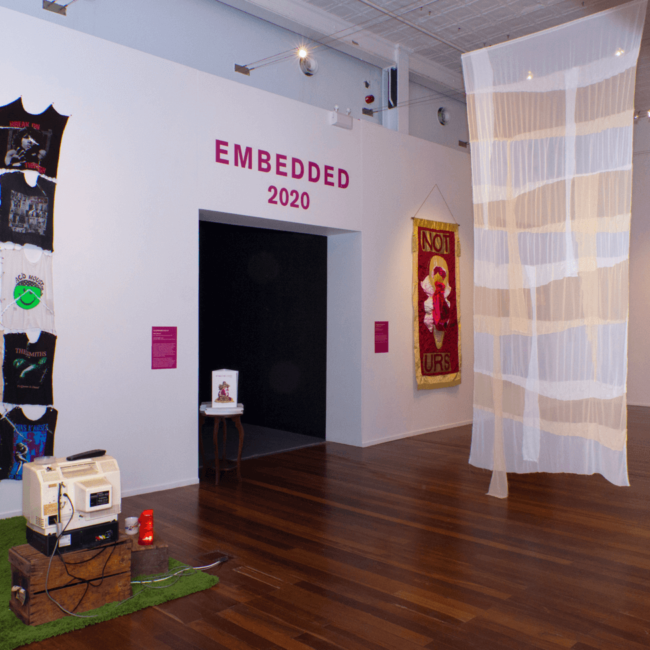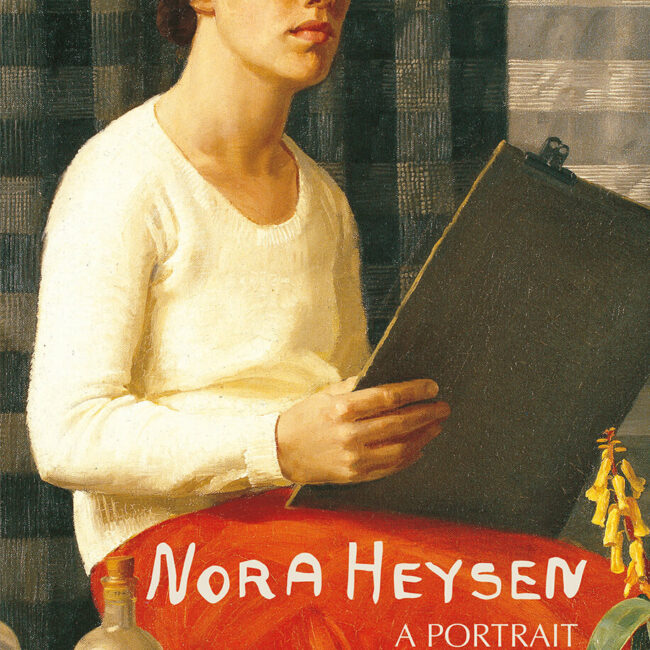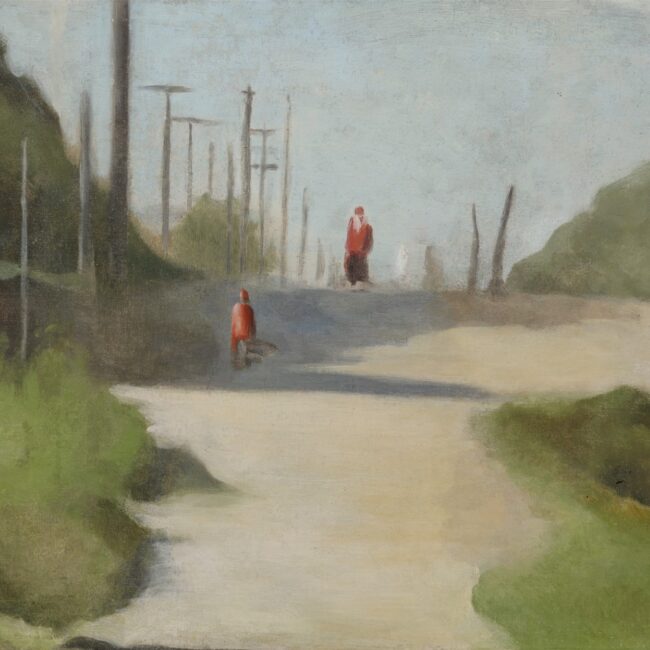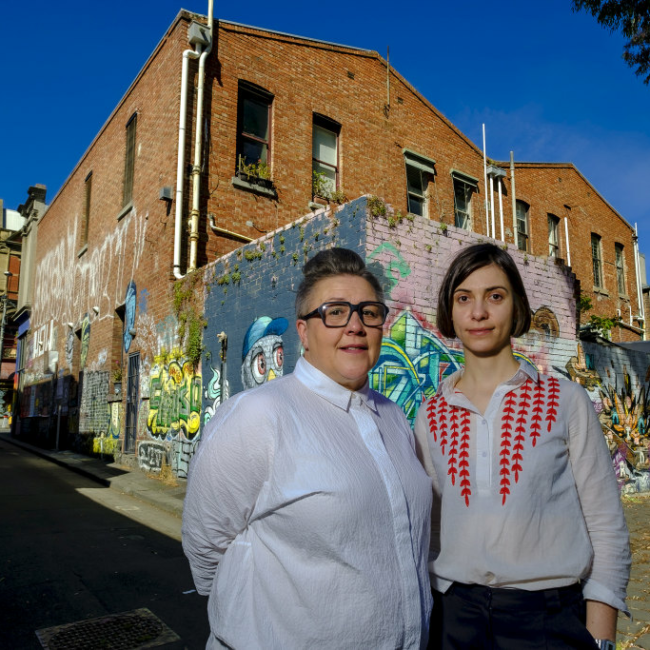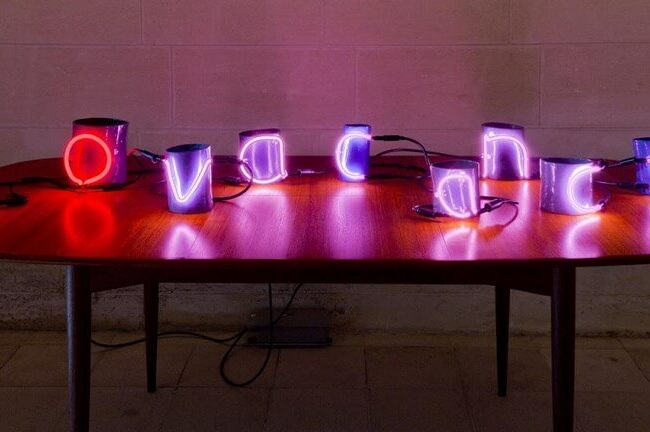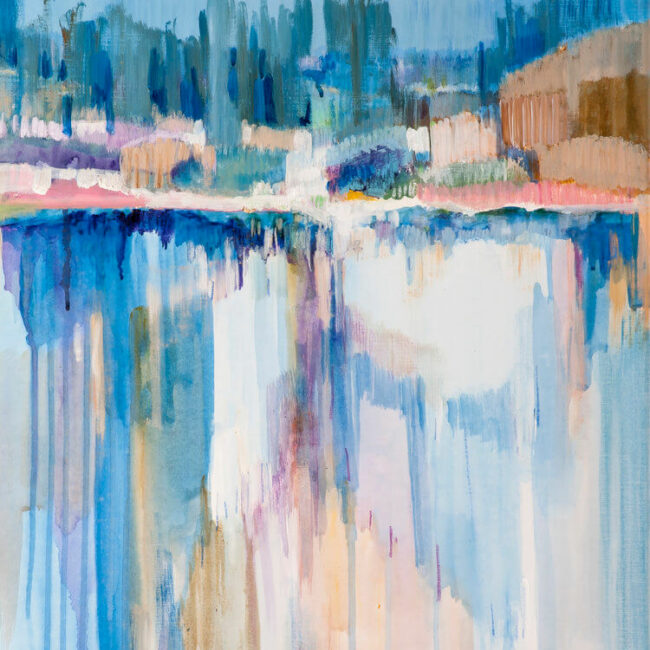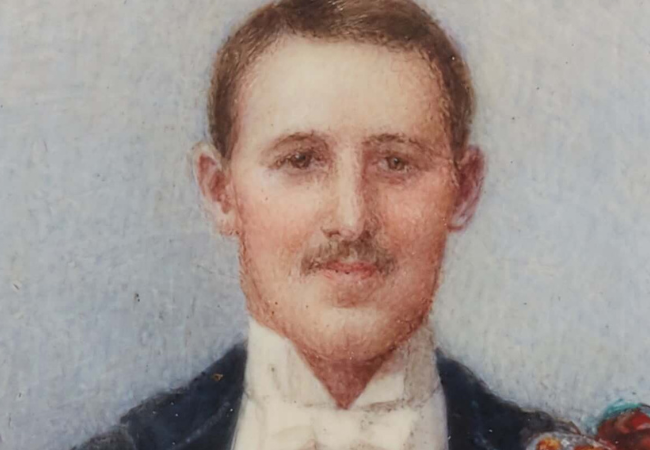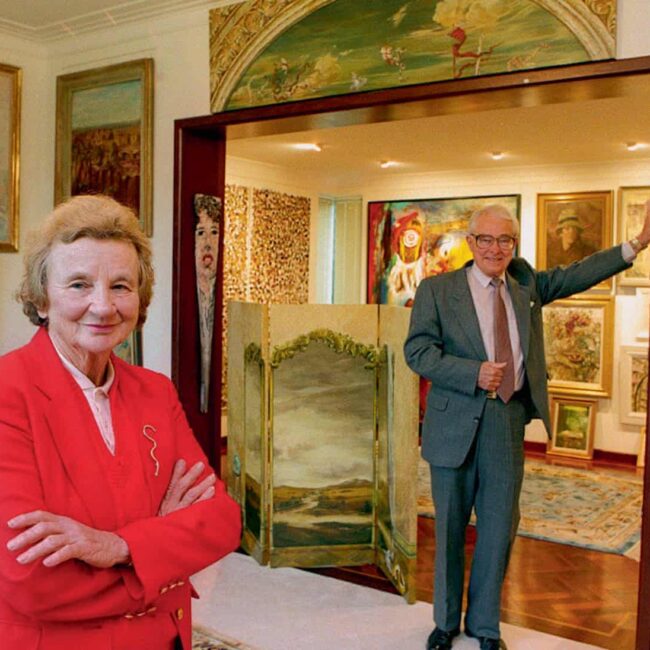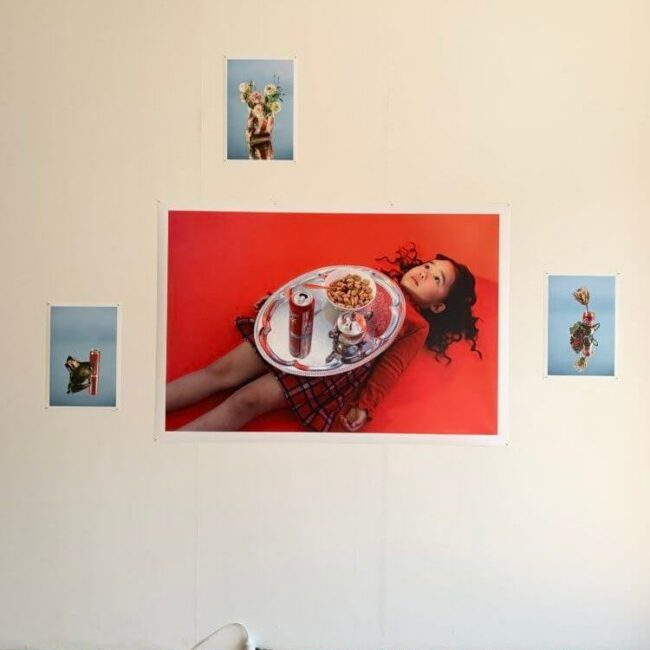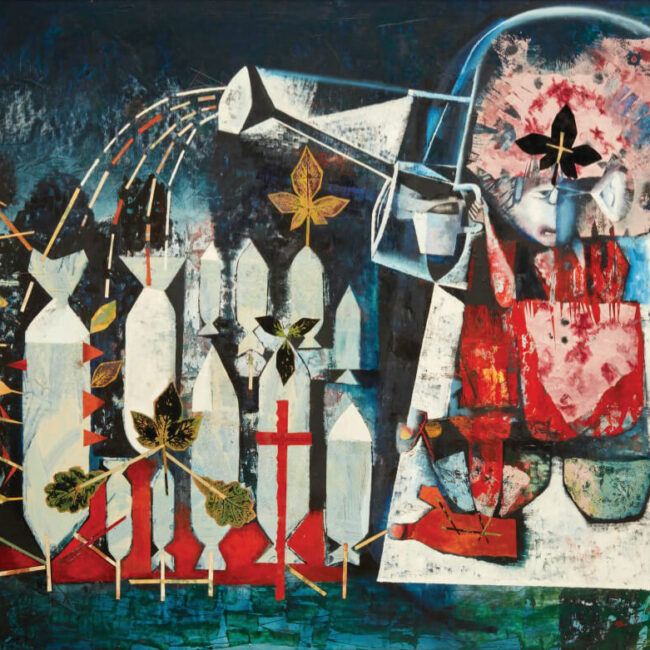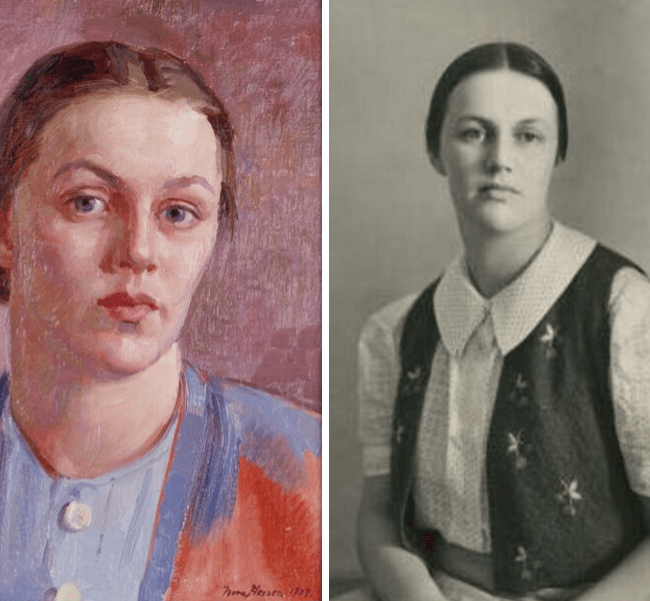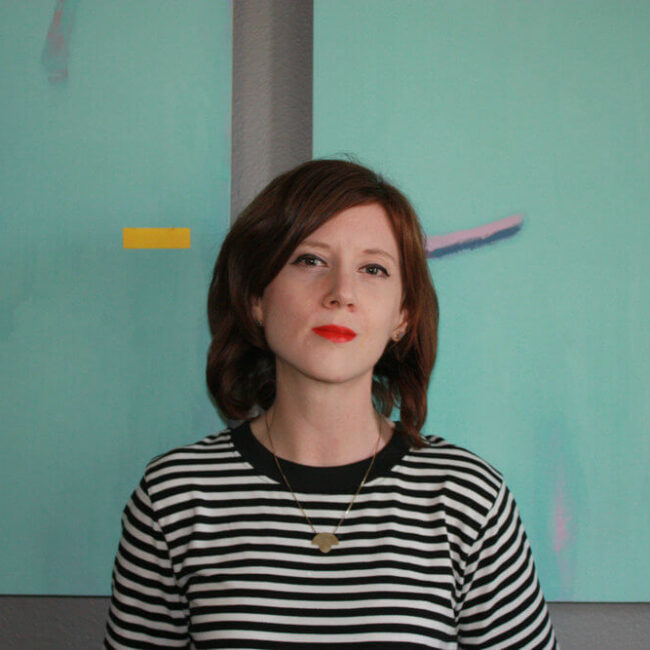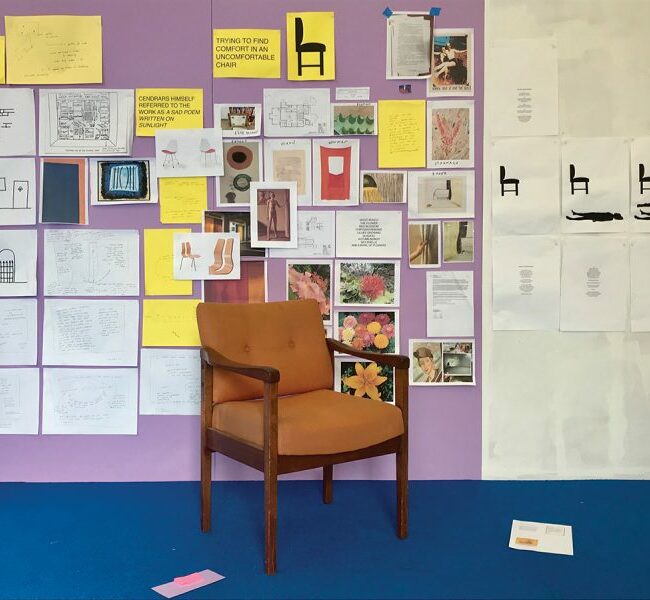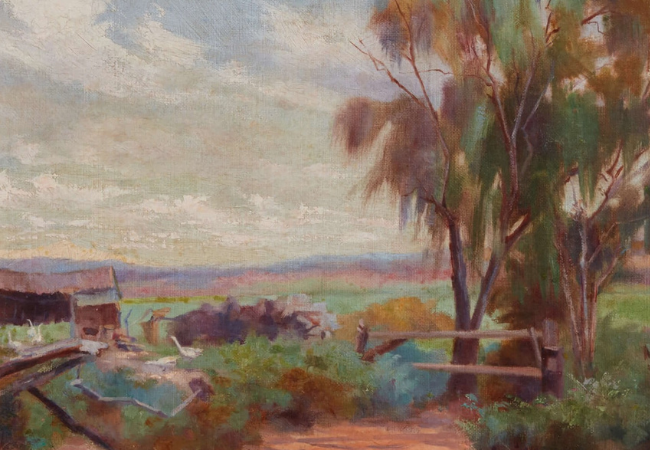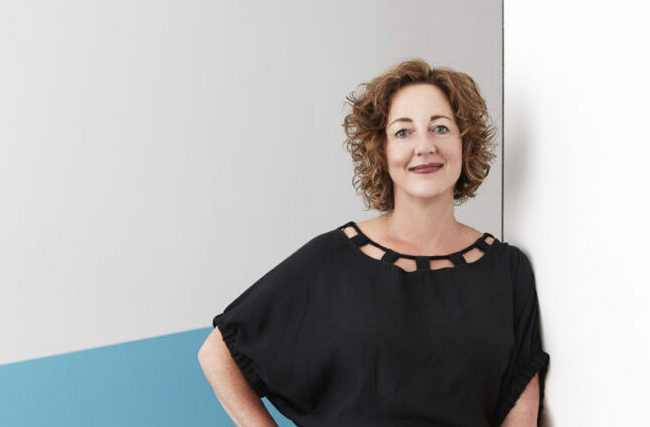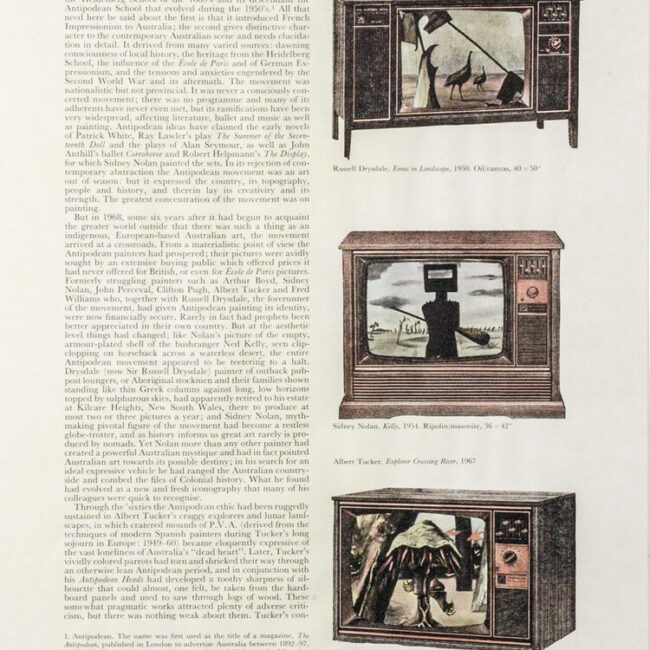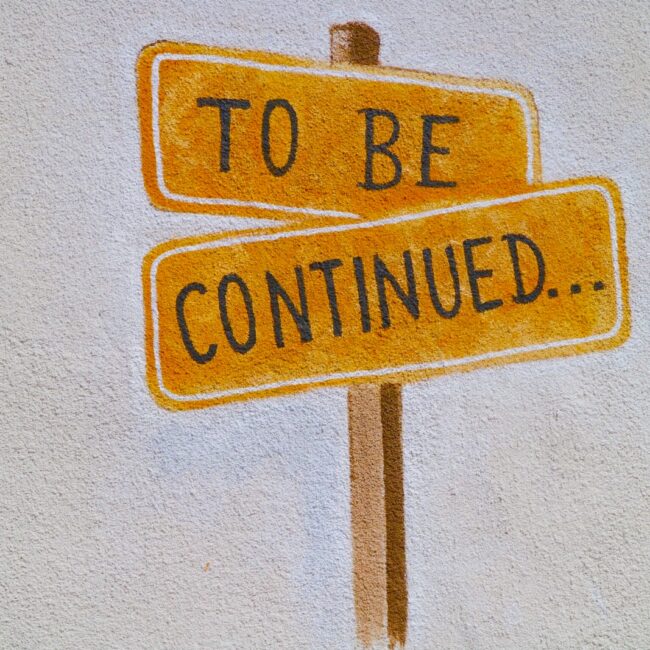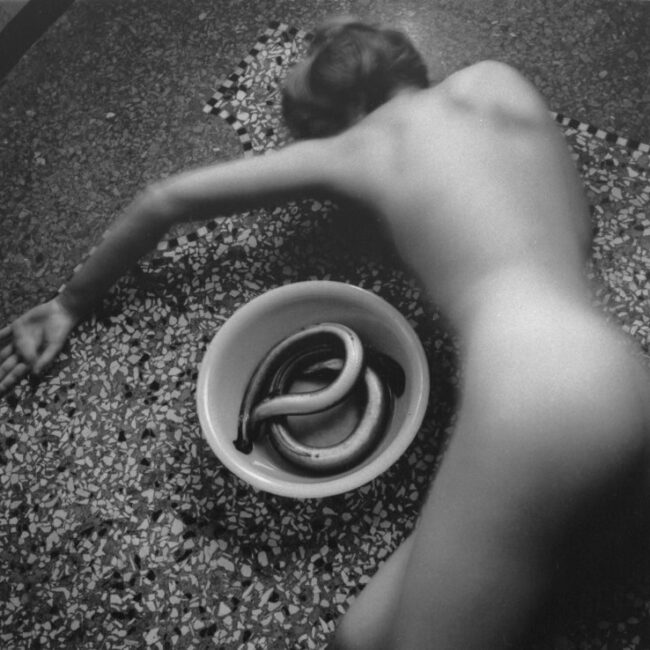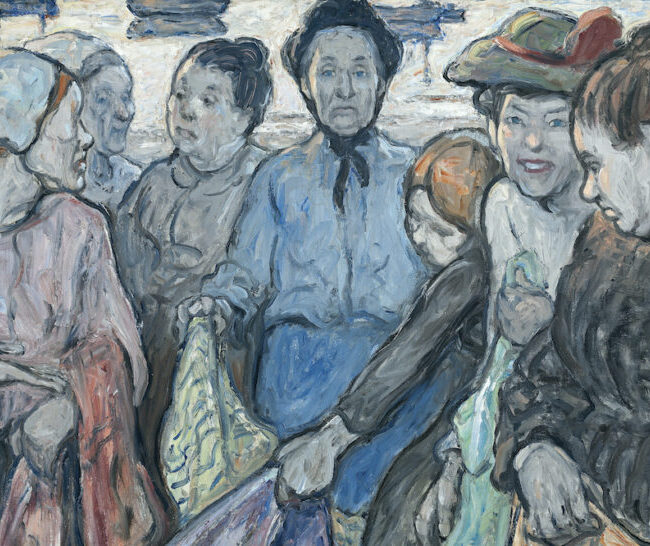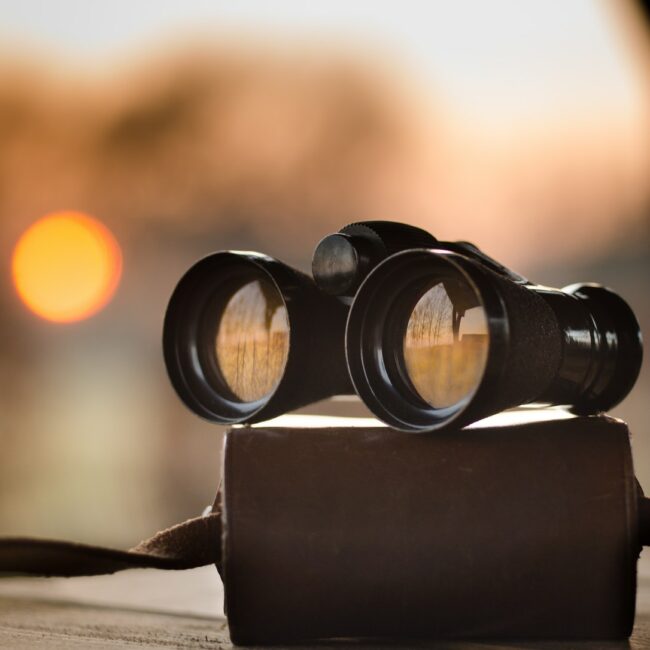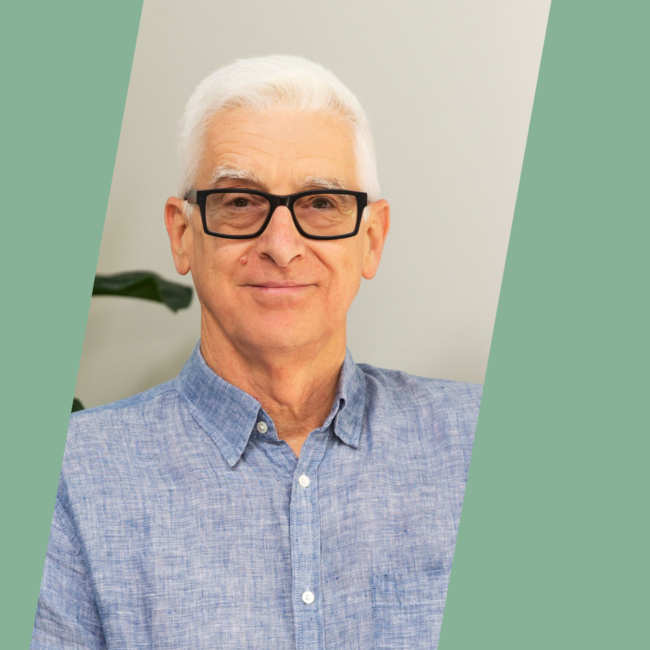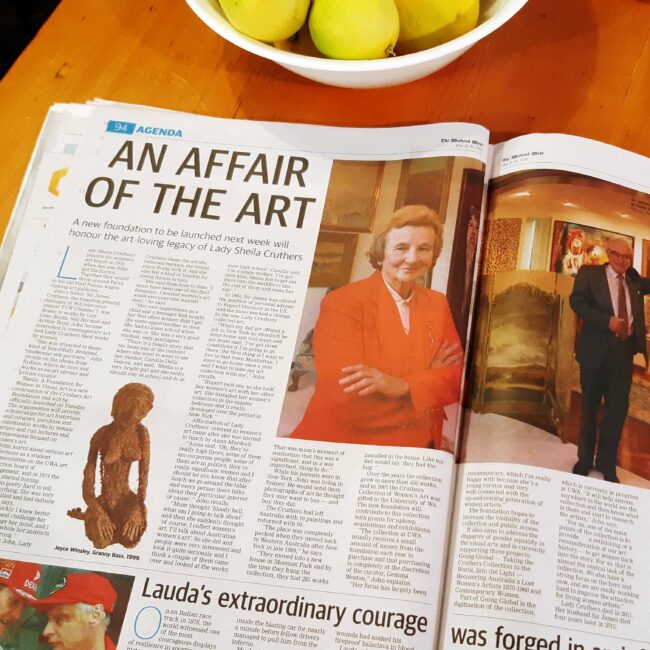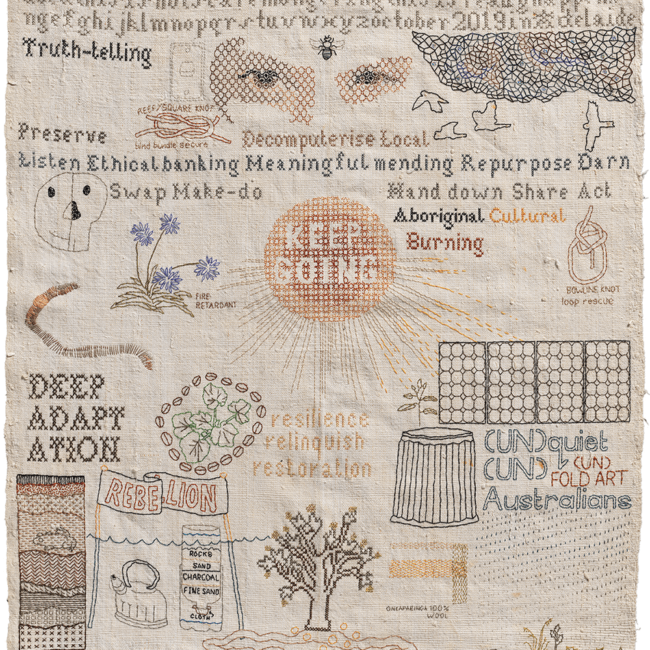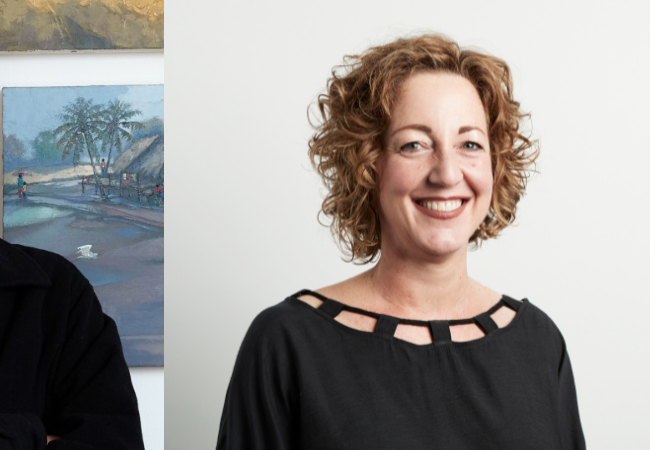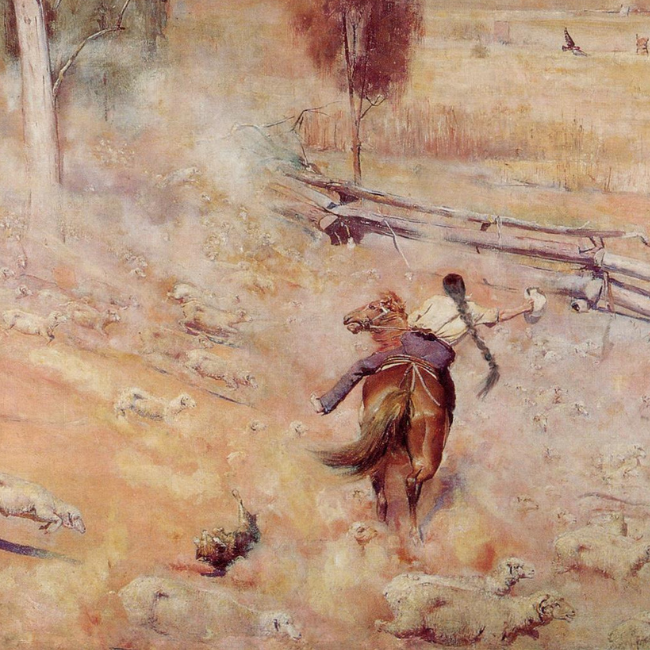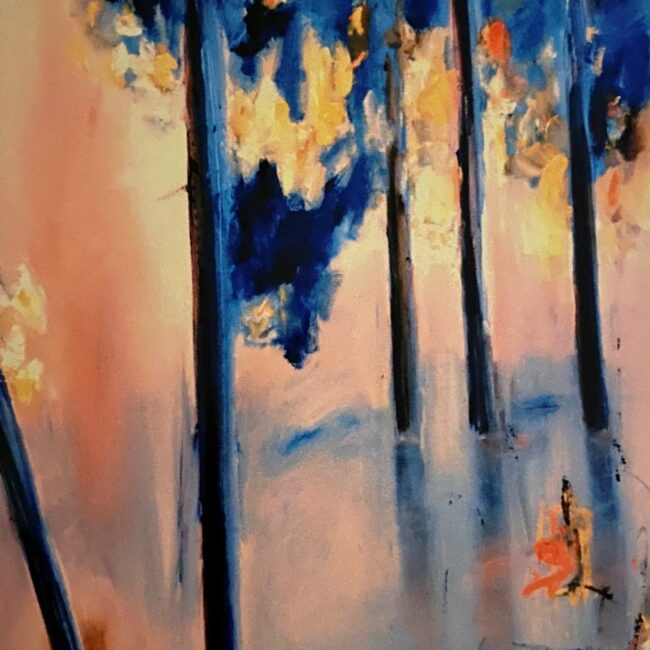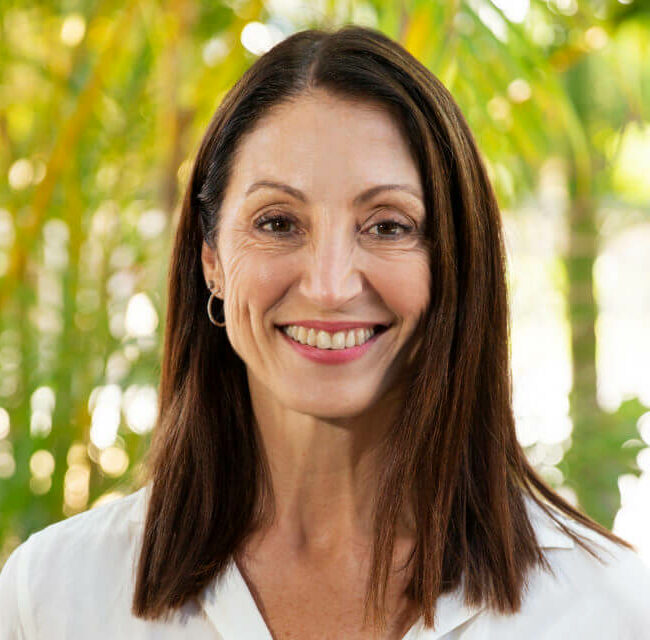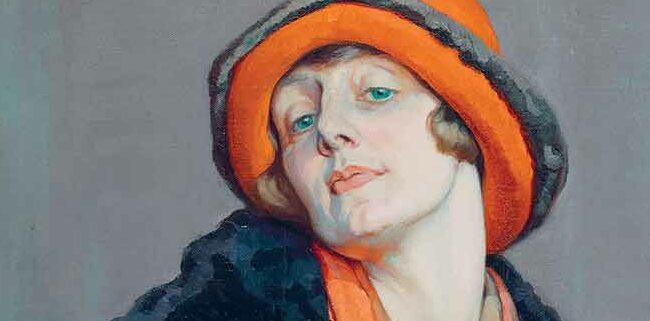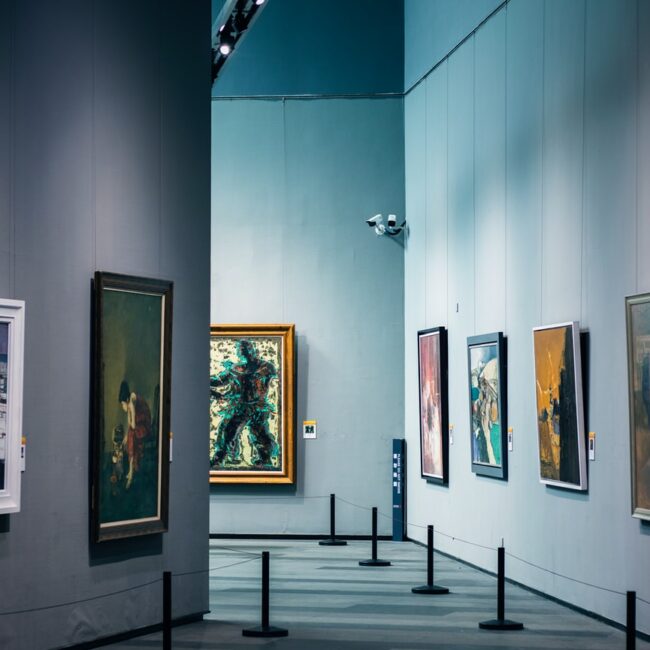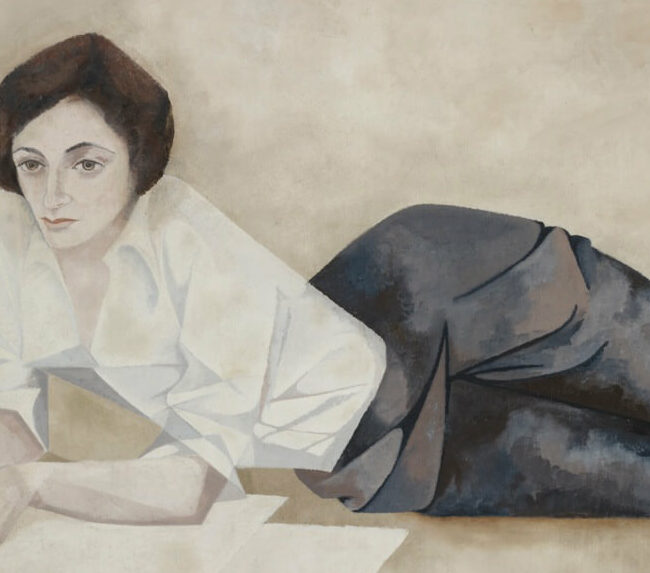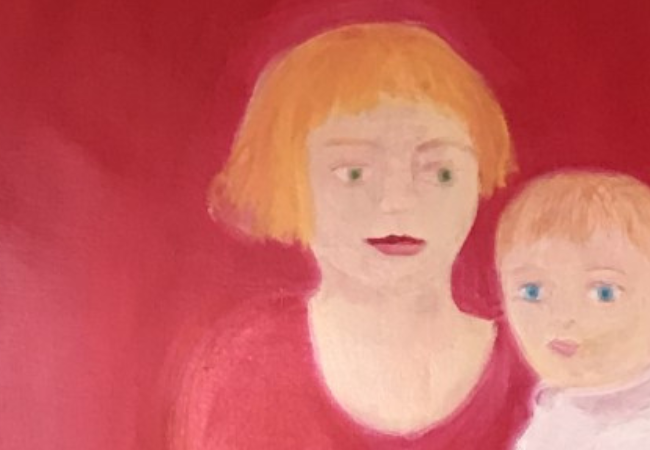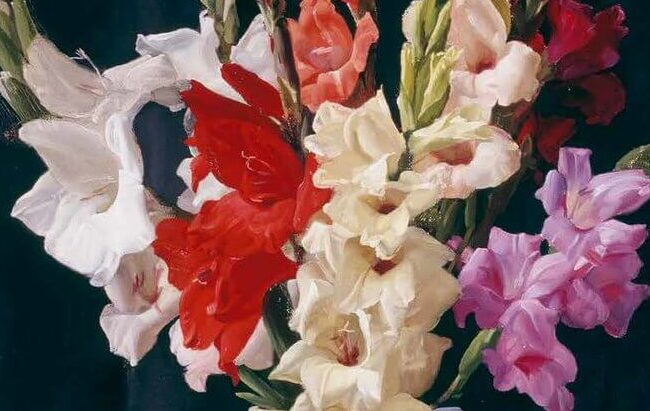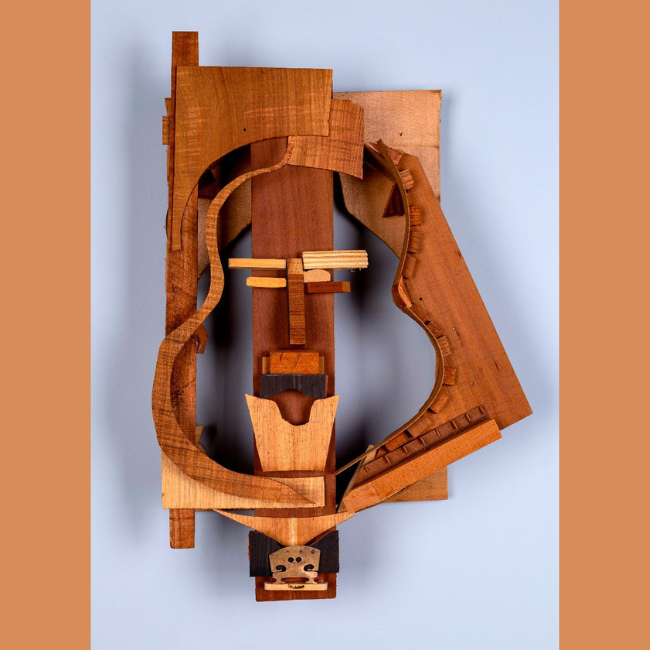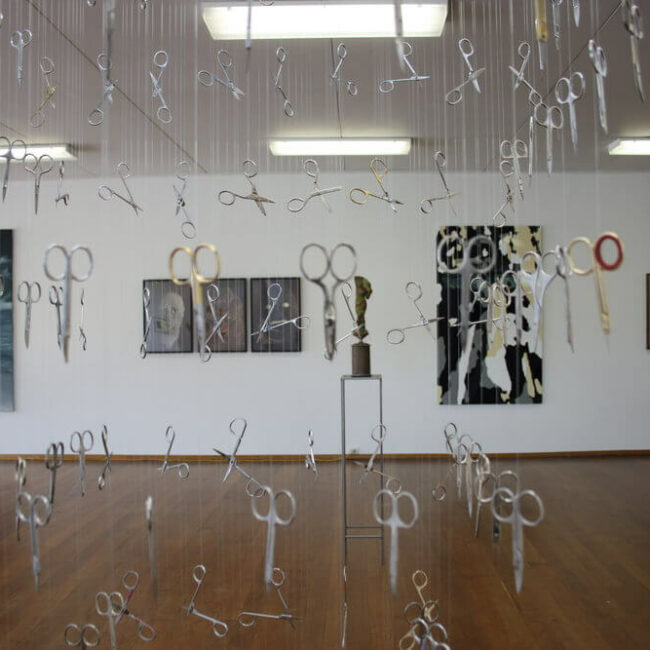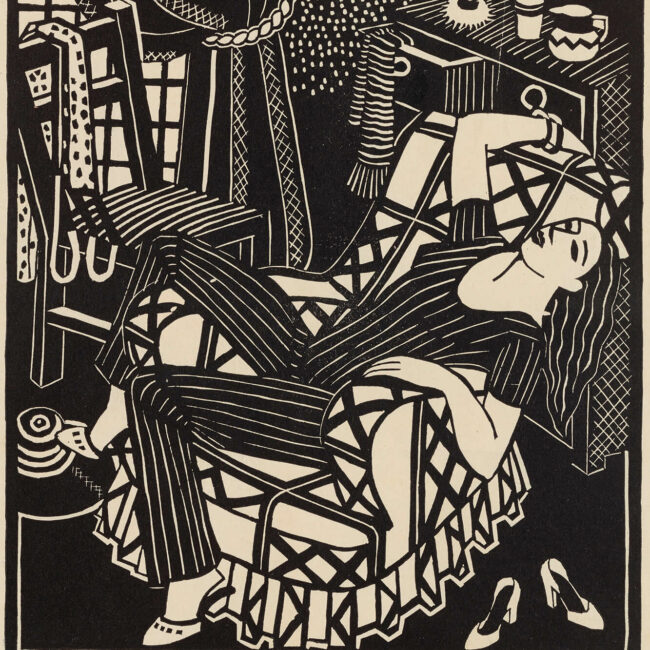New Woman gathers 111 works by more than 80 artists to celebrate Brisbane women artists from the past 100 years. It joins a suite of shows dedicated to re/covering and re/telling Australian art history exclusively through the work of women artists.
By Louise R Mayhew.
A self-styled “new woman” of the Gilded Age positions herself in front of the camera. Sitting down, yet leaning forward, her pose is at once reminiscent of Rodin’s brooding thinker c1881 and rich with the suggestion of contained forward motion, as though she is poised to spring into action, to make concrete the plans she is formulating as she takes another drag on her cigarette and brings a stein of beer to her lips. Her legs are crossed, not demurely with knees together, but boldly with one ankle resting above the other knee, revealing the boots and stockings beneath her skirt. The incongruity between her late Victorian-era clothing and this positioning as dynamic and thinking woman is further highlighted by the crisp contrast of her white petticoat (an exposure of the remnants of the old) and her dark-stockinged legs (symbolic of her new bodily freedom). Frances Benjamin Johnston staged Self-Portrait (as a New Woman) 1896 in her studio in Washington, DC. A long-century later, her photograph illustrates Wikipedia’s article on the phenomenon of the “New Woman”. [1] This fin de siècle feminism sought women’s emancipation through career independence and new physical freedoms, easily identified via the adoption of new movement-enabling dress codes and the radical “bob” haircut.
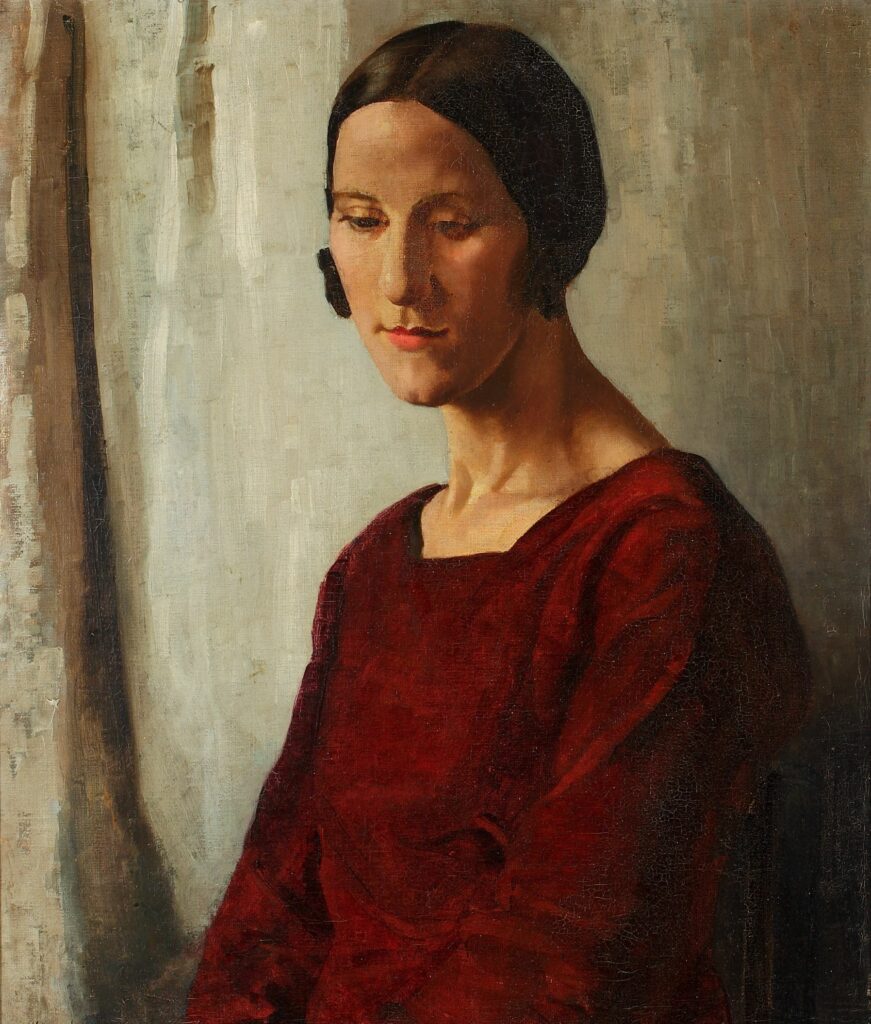
Frances Benjamin, Self-Portrait (as a New Woman), 1896.
New Woman, curated by Miranda Hine at the Museum of Brisbane, also opens with the portrait of a woman. In Untitled (life class model) c1925 by Caroline Barker, newness is promised in her bold, short haircut; the simple tailoring of her scarlet dress and a brilliant flash of vermillion across her lips. Thick lengths of paint, tracing the movement of her paintbrush, point equally to the newness of Barker’s modern art practice.
From Barker’s portrait, New Woman unfolds in a series of five chronological clusters. The small opening series, labelled Advocating (1920–1939), includes works by friends Vida Lahey and Daphne Mayo – figures who loom large in Queensland’s art history for their vital work fostering the arts.[2]
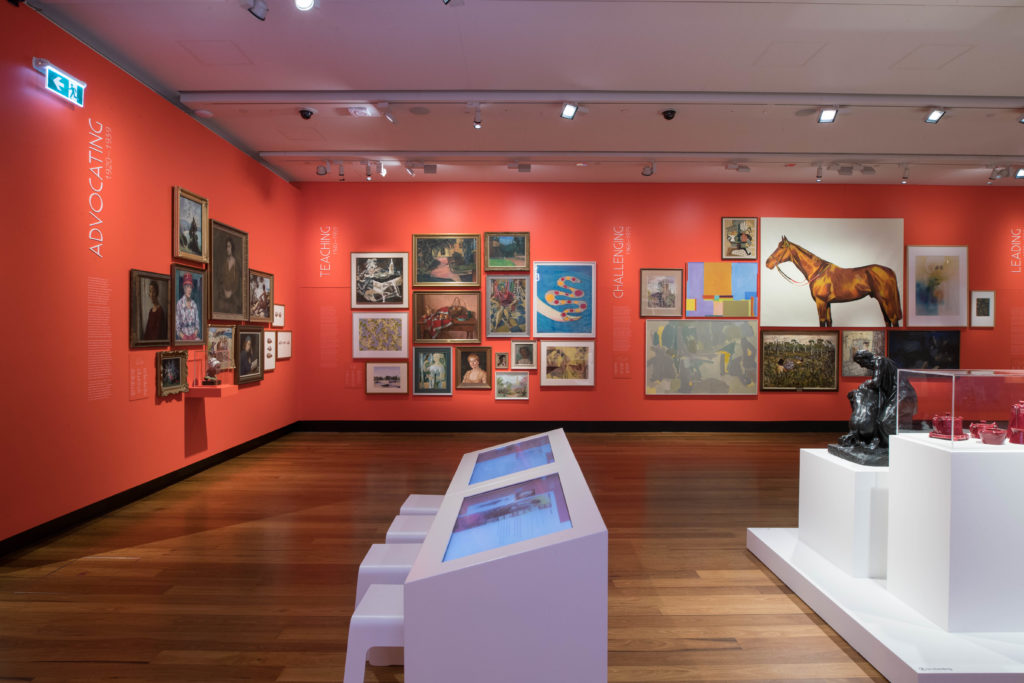
Museum of Brisbane – New Woman. Photo David Kelly.
Salmon-pink lipstick shines, once again, on a stunning bust by Mayo. Titled The Minx 1942, her downcast gaze is betrayed by sultry lips, thickly outlined eyes and a shock of white hair. In this section we also encounter Jeanette Sheldon’s enticing miniature landscapes and seascapes c1930 painted on gum leaves. The works are set within custom-shaped matting and framed behind glass, keeping their gum leaf-canvases secret from a distance. On closer inspection, they conjure a whimsical portal to the past, prompting the questions: Why did she paint on leaves? Where was she when she painted? And how have these delicate and playful objects survived?
Moving clockwise around the gallery the viewer also moves forward through time. Teaching (1940–1959) includes more portraits, a still life and cityscapes in an expanded colour palette. Pink pathways duplicate across Betty Churcher’s Old Senate Room 1957, Betty Quelhurst’s Flowering Trees Brisbane 1956 and Nona Waldie Metcalfe’s The Pink Path 1958. Two works by Margaret Cilento (Margaret Olley’s close friend since high school), demonstrate Queensland artists’ oscillation between Modernist possibilities and more conservative local tastes. Bathers c 1948 is daring in its abstraction and aggressive in its pencilling, muted yellow and pink swathes of colour fill out the work. Yet in Portrait of Kath Ruska (later known as Oodgeroo Noonuccal) 1952 the artist returns to realistic figuration. Above these two, Oodgeroo Noonuccal’s own painting, Rainbow Serpent Banner 1988, glows with the translucent blue of the sky and sea.
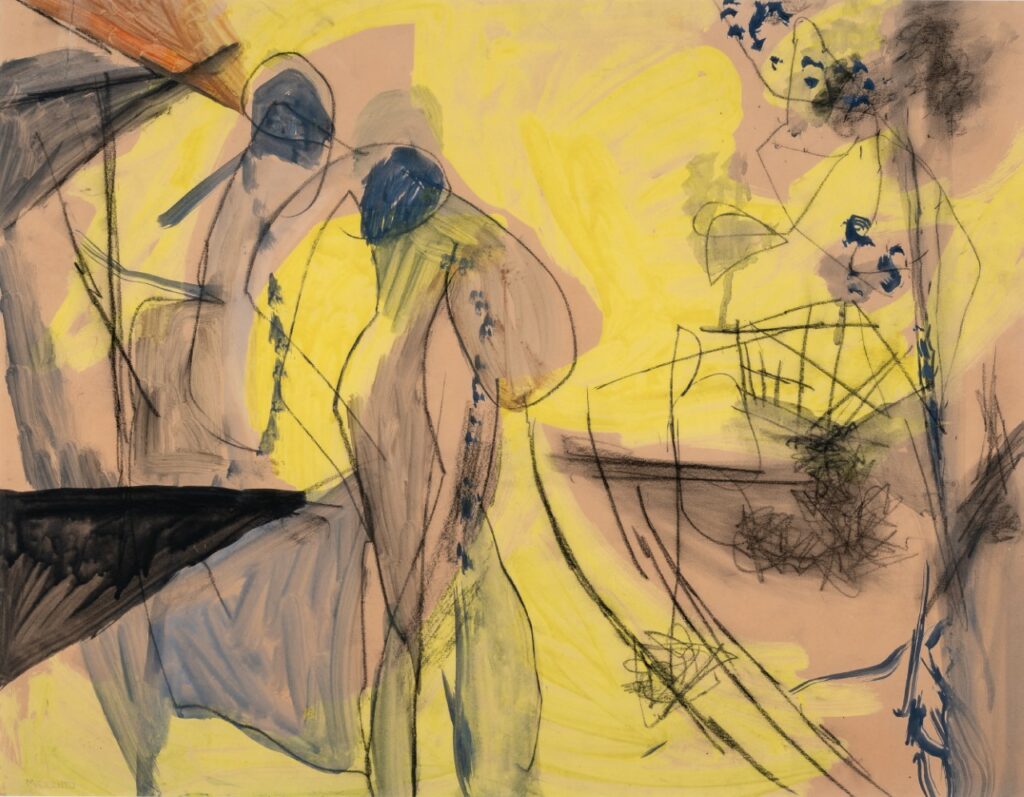
Margaret Cilento, Bathers c1948. Museum of Brisbane Collection, photo by Carl Warner.
The next two clusters, Challenging (1960–1979) and Leading (1980–1999), open out the exhibition to pure abstraction, found objects, performance and photography. Jenny Watson’s huge Chestnut with yellow/green headband from her Horse series no. 3 1973 dominates the wall. Further along, Davida Allen’s faux naïve human figure, composed of an expressive and angular black cut-out body and a neo-Cubist face, caught staring to the right, provides an imaginary rider for Watson’s horse. Scratchy landscapes and muted interiors hang almost unnoticed among Virginia Cuppaidge’s pastel-rich geometric abstraction, inspired by Brisbane’s beloved jacaranda flowers, and Tracey Moffatt’s signature postmodern photography. Turning the corner, in Jay Younger’s Untitled I 1997, glittering hot pink lips open to reveal a glistening diamond, held in suspension by brace-wearing teeth.[3]
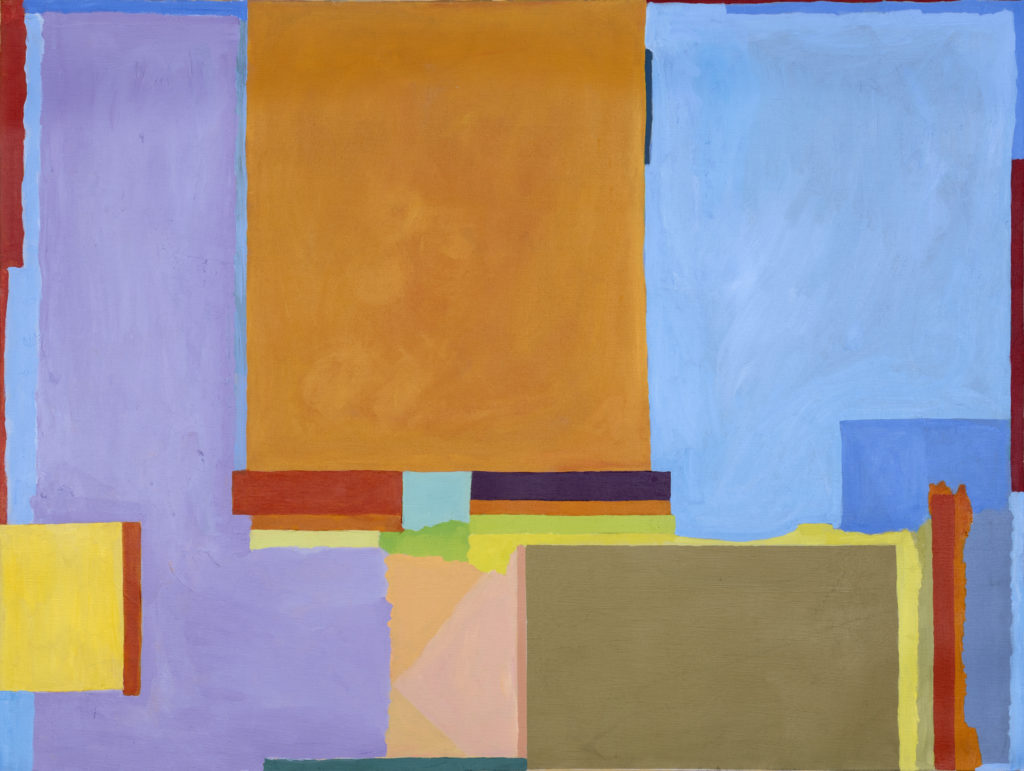
Virginia Cuppaidge, Pale Blue Jacaranda 1970. Donated through the Australian Government’s Cultural Gifts Program by Virginia Cuppaidge 2019, Museum of Brisbane Collection, photo by Carl Warner.
Works made in the new millennium explode along the full length of the final wall. In this section, labelled Expanding (2000–2019), a third of the exhibition’s artworks stretch lower down and higher up the height of the wall as women and non-binary artists literally and metaphorically expand to take up more space. Courtney Coombs’ 2019 neon work glows with the words Everything and Nothing while Naomi Blacklock’s video-mounted performance work A Flame, A Singing Sun 2018 escapes the confines of the wall via two clay pots placed on the gallery floor. Here, Judy Watson’s snaking water dragon 2011 harks back to Oodgeroo Noonuccal’s rainbow serpent. Bianca Beetson’s, James Barth’s and Julie Fragar’s self-portraits point back even further, conjuring the long history of women recording their own likeness. Meanwhile, the joyous colours and hippie-inspired shapes of Alice Lang’s work on paper contain the haunting titular words Believe Women 2018, locating this work firmly in our contemporary age of #metoo. Having spun around the gallery, a central cluster of sculptural works encased in glass cubes vie for attention.
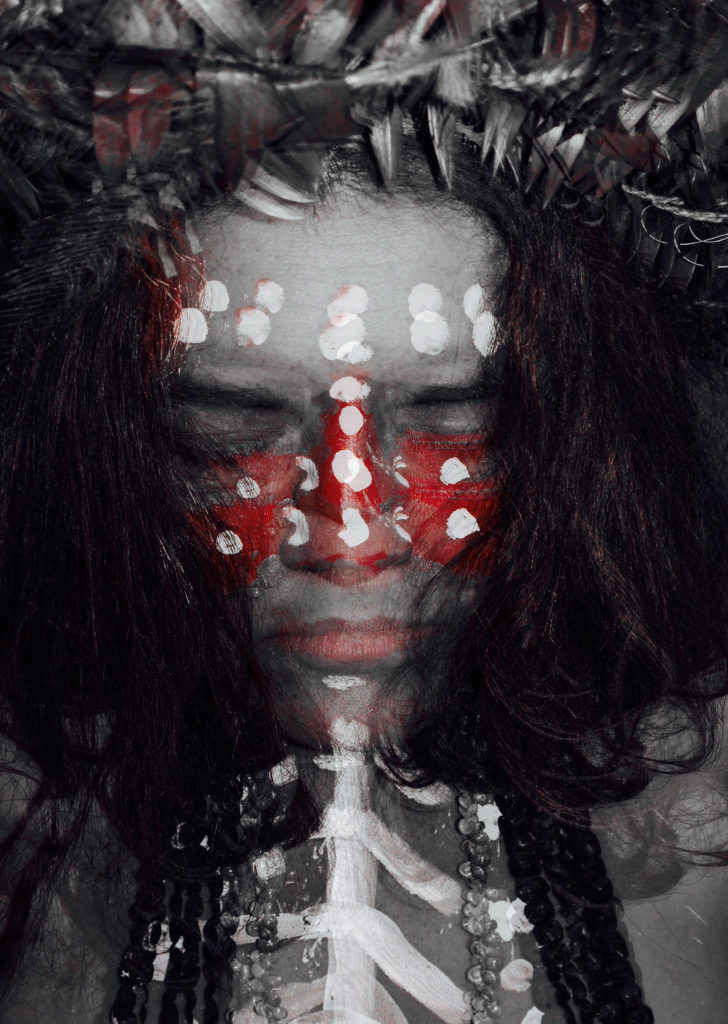
Bianca Beetson, Warrior Woman Bonyi 2017. Courtesy the artist.
New Woman gathers together 111 works by more than 80 artists to celebrate Brisbane women artists from the past 100 years. Its salon hang is a rejoinder to men’s traditional dominance in the gallery. Glowing tangerine walls further symbolise the show’s rejection of the white cube and its attendant hierarchies, which have traditionally operated to limit women’s artistic success.[4] Via this feminist positioning, New Woman joins a suite of shows dedicated to re/covering and re/telling Australian art history exclusively through the work of women artists. In Brisbane alone, recent examples include Julie Ewington’s Contemporary Australia: Women, Gallery of Modern Art, 2012; Lara Nicholls’ Abstraction: Celebrating Australian Women Abstract Artists, National Gallery of Australia and touring, 2017–2018; and Naomi Evan’s Dark Rooms: Women Directing the Lens 1978–98, Griffith University Art Museum, 2018. Standing in the centre of New Woman, bathed in the fullness of the single-room salon hang, the brightness of its walls and the brilliance of its artists recalls Maura Reilly’s directive that women’s inequality in the arts, comprehensively documented in Australia by The Countess/es, must be countered through curatorial activism in exhibitions like this.[5]
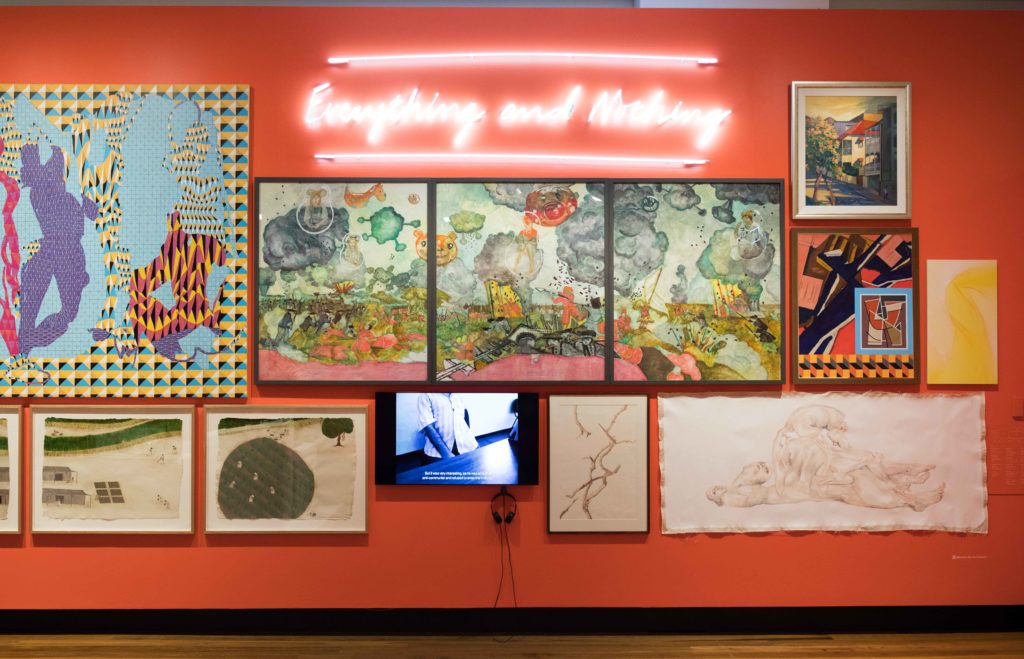
Museum of Brisbane – New Woman. Photo David Kelly.
New Woman is wildly appealing. The gallery brims with visitors and tour groups. Hine explains the chronological hang caters to museum-going audiences and their interest in social history. Against the exhibition’s larger narrative of women’s creative expansion, the show traces connections between artworks via biographies, highlighting friendships and the influence of teachers on pupils. Curious visitors can access further biographical texts on each artist via interactive panels. The accompanying exhibition catalogue reiterates the exhibition’s broad and accessible appeal. Each artists’ work is lavishly reproduced in full-page and double-page spreads; the layout repeating the chronology of the exhibition. Following Louise Martin-Chew’s introductory essay, which charts a celebratory history of Brisbane art practice, words are restrained to a repetition of the exhibition’s concise wall text.
Women and history are uncomfortable fellows.[6] Patriarchal history operates as a force that erases women’s contributions from memory, pushing them into the footnotes, the storage units and the attics, making anonymous a woman. Feminism equally grapples with the past. Susan Faludi shockingly characterises the relationships between younger and older feminists as one of matricide; the younger casting/killing off the achievements of their feminist foremothers as they strive confidently into the improved feminism of their own generation.[7] New Woman’s chronological hang subsequently raises interesting and difficult questions. What are the effects of this construction of time? What narratives does the exhibition re/tell? and What narratives does it occlude?
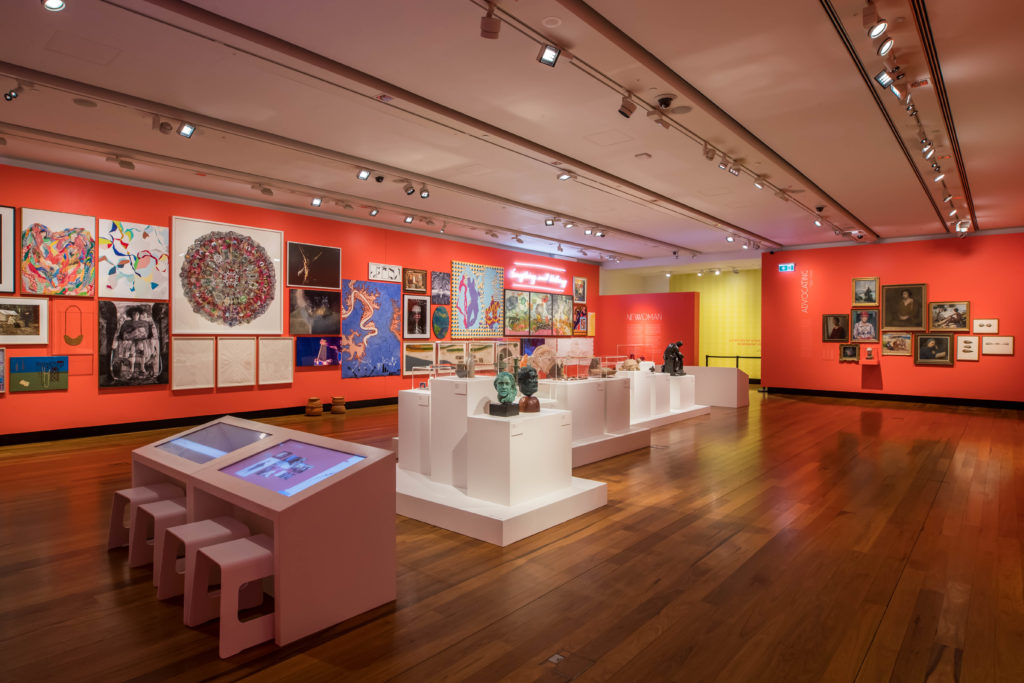
Museum of Brisbane – New Woman. Photo David Kelly.
With attention to these questions, let’s return to New Woman’s opening artwork. Comparing Johnston’s dynamic self-representation with Barker’s demure, unnamed, model one wonders where is Brisbane’s feminist zeal? In 1929, Brisbane (and Sydney) hosted Australia’s second International Women’s Day event, only a year behind Sydney’s first rally in 1928.[8] On its eve, Garnet Agnew illustrated Brisbane’s new woman as a youthful and stylish flapper for the cover of The Queenslander.[9] Turning her head to the left, she farewells her conservatively-dressed sister, a materialisation of the century past, while angling her body to the future. Moving through the artworks hung in the exhibition’s opening cluster, looking for a similar manifestation of confidence, we might recognise it in Mayo’s tender yet bold portrait of an aging Vida Lahey 1965 where the sitter’s gaze, if not defiant, lifts knowingly from her lap.
Curiously, however, Mayo’s work was painted in 1965, belonging more accurately among the works marked Challenging (1960–1979). There, in the era of second-wave feminism, one hunts again for evidence of Brisbane’s feminism. After all, it was this same year that Merle Thornton and Rosalie Bogner famously chained themselves to the bar of Brisbane’s Regatta Hotel, calling attention to women’s social inequality through their insistence on being served beer – alongside me – at the public bar. Historian Marilyn Lake interprets the Brisbane-based public action as the beginning of second-wave feminism in Australia.[10] Thornton subsequently founded the Brisbane Equal Opportunities for Women Association, successively overturning the marriage bar in 1966 and co-established the new discipline of women’s studies at The University of Queensland in 1973. Said otherwise, second-wave feminism neither skipped, nor arrived late to, the big country town of Brisbane. In keeping with this, the exhibition wall text for the Challenging section highlights Brisbane women artists’ awareness of their under-representation and their attendant reclamation of “feminine symbols”; yet neither the works nor the accompanying catalogue bear out this narrative. More accurately we see representations of late modernism in Virginia Cuppaidge, Madonna Staunton and Irene Amos; and a conservative continuation of the “lessor arts” in Phyllis Schneider’s Cubist-inspired still life, Elisabeth Cummings’ dark domestic interior (an odd inclusion from c 1995) and Kathleen Shillam’s animal sculptures (further anachronisms, with creation dates c 1950s and 1986). In Martin-Chew’s essay, “Rise of the new woman”, desiring explication of the missing activism and feminine sensibility of the era, one finds the first mention of the f-word in relation to 1980s art star Davida Allen, via the quote: “I have never¾then and still no – had the verbal [n]or intellectual energy to engage in the debate called ‘feminism’”, prompting one to wonder: What were the feminist debates that played out across Brisbane’s canvases and consciousness-raising circles?[11]
Looking to the margins, one finds the whisper of a Brisbane Women’s Art Movement reported by Julie Ewington.[12] In poster collections, the wild ferocity of second-wave feminism is present in a 1979 print made by Redback Graphix’ Michael Callaghan and young students, Cherie Bradshaw and Lyn Finch, at Brisbane’s Griffith University. Boxing in a photograph of a heterosexual couple, paired with a wedding cake and bridal figurines, the poster reads: “Prostitution is the rental of the body | Marriage is the SALE!”[13] Alternatively, in the broader oeuvres of artists in New Woman, there are jewels of feminist art history. In 1973, for example, Cuppaidge exhibited Eblin 1972 in New York’s first museum survey of women’s practice, Women Choose Women.[14] The show was a radical experiment in feminist curating, pairing an all-female jury with the blind selection of works from a women-only call-out.
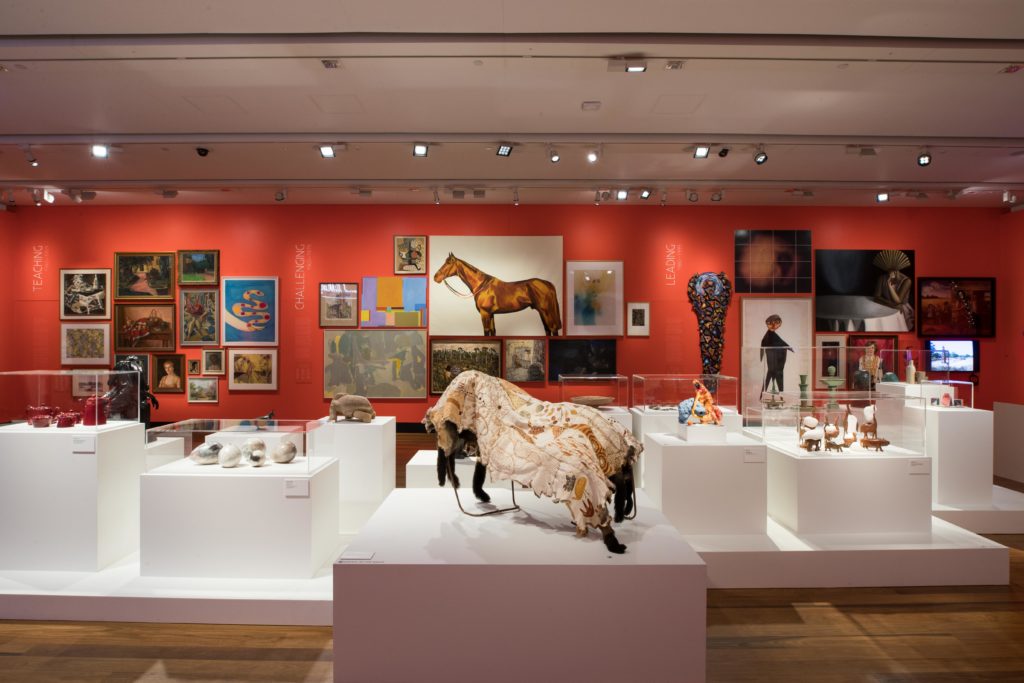
Museum of Brisbane – New Woman. Photo David Kelly.
New Woman implicitly champions contemporary practice through the vast allocation of wall space to artists practicing in the last two decades. But these artists are yet to gather sediment; they are the least in need of recovery. Against Faludi’s matricidal narrative, Elisabeth Freeman ponders: “the point may be to trail behind actually existing social possibilities: to be interested in the tail end of things, willing to be bathed in the fading light of whatever has been declared useless”.[15] Via this encouragement, one might re/stage New Woman. In this show, the largest wall would highlight a broader array of the oldest works, loosed from the cement of chronological history and the restrictions of selecting artworks via biography, in dynamic dialogue with works from the present. New Woman is not that exhibition, but it does lay the groundwork for curatorial imaginings. Standing in a room filled with a century of women’s creative practice, things like this seem possible.
[1] See: https://en.wikipedia.org/wiki/New_Woman.
[2] Lahey and Mayo established the Queensland Art Fund, prioritising access to art for children and rural Queenslanders, at a time when Queensland Art Gallery was rumoured to be the least funded gallery in the British Empire.
[3] The works’ counterpart Untitled II 1997, which captures the trace of a bitemark on skin, was recently exhibition in Evans’ Dark Rooms.
[4] The exhibition’s walls were inspired by the 2019 Pantone colour of the year, “living coral”, which promises an optimistic and playful escape from the technological disconnection of the present: https://www.pantone.com/color-intelligence/color-of-the-year/color-of-the-year-2019. Writing in January 2020, yellows and oranges have taken on a sinister tone in Australia’s collective consciousness as our skies fill with the flames and smoke of a country on fire.
[5] See Maura Reilly, Curatorial Activism: Towards an Ethics of Curating, London, Thames and Hudson, 2018; and The CoUNTess Report, http://thecountessreport.com.au/.
[6] See for example Rosalyn Deutsche, Aruna D’Souza, Miwon Kwon, Ulrike Müller, Mignon Nixon and Senam Okudzeto, “Feminist Time: A Conversation,” Grey Room 2008: 32-67.
[7] Susan Faludi, “American Electra: Feminism’s ritual matricide”, Harper’s Magazine, 2010.
[8] Joyce Stevens, “A History of International Women’s Day in words and images”, Isis Creations, http://www.isis.aust.com/iwd/stevens/firstiwd.htm.
[9] https://trove.nla.gov.au/work/153946357.
[10] Lake quoted in Margaret Henderson, “Archiving the feminist self: reflections on the personal papers of Merle Thornton”, Archives and Manuscripts 41, no 2 (2013): 91-104, DOI: 10.1080/01576895.2013.806013.
[11] Allen quoted in Louise Martin-Chew, “Rise of the new woman”, New Woman, Brisbane, Museum of Brisbane, 2019, 12.
[12] Ewington in Therese Kenyon, Under a Hot Tin Roof: Art, politics and passion at the Tin Sheds Art Workshop Sydney, Sydney: State Library of New South Wales Press, 1995, 69.
[13] The digitised work is available for viewing here: https://cs.nga.gov.au/detail.cfm?irn=166976.
[14] Mary Birmingham, “Choices and Connection”, Women Choose Women Again, Visual Arts Centre, New Jersey, 2014 https://issuu.com/artcenternj/docs/women_choose_women_again_catalogue
[15] Elisabeth Freeman, Time Binds: Queer Temporalities, Queer Histories, 2010.

